- WV App Login
- Site Search
- Report Templates
- Speech Helpers
- SLP Resources
- Top 10 Tips
- Getting an Eval
- Certified SLP
- How to Say the R Sound
- 0-18 Months
- 18-36 Months
- 18-30 Months
- 30-36 Months
- 10-11 Years
- Articulation
- Cleft Palate
- Phonological
- Dysphagia Causes
- Dysphagia Treatment

245+ G Words, Phrases, Sentences, and Reading Passages
As promised here are the words for your unlimited use .
If you know others who can use our lists ...
... please share this page using our site share buttons.
We also offer a free 5 part video series on Teaching the G sound.
Explore Our Goal Reaching, Client Centered Products

Buy the G Word Flashcards for $4.99

merry-go-round
Initial G by Syllables
game tokens
garden hose
gas station
Medial G by Syllables
chuck wagon
beginner's luck
investigate
magnificent
prolongation
significant
togetherness
egotistical
Final G by Syllables
clothes bag
deviled egg
garbage bag
laundry bag
plastic bag
prairie dog
punching bag
sandwich bag
sleeping bag
card catalog
carry-on bag
gift catalog
prescription drug
seeing-eye-dog
SEE ALSO: The Best Free App for Speech Therapy

Initial G Phrases and Sentences
old garbage
white ghost
gold pieces
pet goldfish
golf course
pretty goose
play guitar
My favorite game is checkers.
Their house has two garage doors.
Take the garbage out today.
I work in my garden on Saturday.
I need to fill my car with gas.
The gate was shut.
Don't look, there's a ghost!
He is bringing a small gift.
The girl is sitting on the pink chair.
He is ready to go.
I kicked the ball and made a goal.
The baby goat stayed by it's mom.
There are many gold pieces.
I won the goldfish at the carnival.
They are all playing golf.
The goose has brown feathers.
Can I play your guitar?
I like blue gum.
Medial G Phrases and Sentences
weather in August
chinese dragon
soaring eagle
foggy street
juicy hamburger
jogging trail
juggle balls
heavy luggage
strong magnet
dirty pigpen
cute pigtail
noisy sea gull
sweet sugar
small tugboat
My birthday is on August 20th.
Mountain lion is another name for cougar.
The statue was of a dragon.
A soaring eagle was looking for food.
It was so foggy we couldn't see where we were going.
Let's get a hamburger for dinner.
They go jogging on Tuesdays.
She likes to juggle at the beach.
Someone left their luggage here.
The nails were stuck to the magnet.
The pigpen was full.
The pigtail looks cute on her.
The sea gull almost flew into me.
Don't put too much sugar in the lemonade.
We saw a tiger at the zoo.
The tugboat can pull large ships.
The dog is sitting in the wagon.
I do yoga to relax my mind.
Final G Phrases and Sentences
colorful bug
checkered flag
grilled hot dog
She only bought one bag of groceries.
I want the big egg.
The bug landed on my arm and I blew it off.
We need to dig a bigger hole for the post.
My dog is a German Shepherd and Black Lab mix.
Please cook the egg yolk.
He waved the checkered flag.
The frog caught the fly with its tongue.
I want mustard on my hot dog.
She gave him a tight hug.
He hoped his leg wouldn't cramp.
He made the seat out of a log.
My mug needs a refill.
The pig was laying in the mud.
Use the rag to clean the floor.
There is a big rug in my house.
She wore a black wig to the costume party.
G Reading Paragraphs
Gus gives a gift.
Once there was a goose named Gus. Gus liked to play games, chew gum, and give gifts. Everyone who knew Gus, knew that he gave great gifts.
Once he gave someone a guitar. Another time he gave his friend a new set of luggage. All of his friends agreed that the best gift that Gus ever gave was a year's supply of hamburgers.
One day, Gus was tugging around a wagon with a gigantic bag in it. He tugged on the wagon from Mr. Dog's farm all the way to Mrs. Frog's wig shop. Everyone in town saw the wagon with the gigantic bag in it, but no one knew who would get the bag.
Doug was a good friend of Gus. Doug was busy planting green beans, grapes, and gooseberries in his garden. He didn't see Gus coming toward his house and tugging the wagon behind him.
When Gus finally reached Doug in his garden, Doug said, "Why are you pulling that wagon Gus?"
Gus replied, "I came to give you a gift Doug."
Doug was very excited and felt like an important person. He knew that Gus gave good gifts.
When Doug took the bag off of the gift, he couldn't believe his eyes. It was a big stack of eggs! Doug was so happy that he ran over to Gus and gave him a big hug.
Doug loved to eat eggs every morning. He knew how to cook eggs in many different ways. Doug thanked Gus for the nice gift and said, "I will buy you a nice gift one day."
Then they both said goodbye and Gus went home.
Each year Gary would play golf in August. He would get his golf clubs from the garage and drive to the golf course.
On his way, he would pass Farmer Gil's goose and pig farm. When he got to the golf course he bought a hot dog, a bag of chips, and a big mug of hot chocolate.
He played his best game while chewing sugar free gum and using the mug with the green dragon on it. He wanted to do that again. He grabbed his golf bag and dragon mug and headed for the first hole.
Man with the Gold Guitar
When Gabe began learning to play the guitar, he thought it would be easier than chewing gum. After his third lesson, his head was foggy from everything he learned. Then he met the man with the gold guitar.
He said his name was "Golden" but Gabe thought it was something else.
Golden taught Gabe to set goals while he learned how to play the guitar. Golden gave Gabe a small flag with the words "Set Goals" on it that he could keep with him as a reminder. Gabe kept it with his guitar and used it every time he learned a new lesson.
After that, he never saw Golden again. Some people say Golden was a nice ghost who liked to help people.
This list of functional words was professionally selected to be the most useful for a child or adult who has difficulty with producing the "G" sound.
We encourage you to use this list when practicing at home.
Doing home practice will help your child make much faster progress toward correct production.
Speech-Language Pathologists (SLPs) are only able to see students/clients 30-60 mins (or less) per week.
This is not enough time for your child to overcome an articulation disorder with the "G" sound. But with high caseloads...
...it's all SLPs can do.
There's only so much time in the day.
Every day that your child goes without practice it becomes more and more difficult to correct an "G" error because he/she continues to say it incorrectly.
SEE ALSO: The Best Books for Speech Therapy Practice

We know life is busy , but if you're reading this you're probably someone who cares about helping their loved one as much as you can.
Practice 5-10 minutes whenever you can, but try to do it on a consistent basis (daily).
Please, please, please use this list to practice.
It will be a great benefit to you and your loved one's progress.
Freebies, Activities, and Specials, Oh My! Sign up for Terrific Therapy Activity Emails
See Past Email Examples
Your information is 100% private & never shared .

Hi! We're Luke and Hollie.
We are both MS CCC-SLPs and fell in love while studying for our degrees. Since then we have done everything together - graduated, worked, and started a family. We spend most of our time with our family and the rest making this site for you.

Top Free Resources

Word Vault Essential

# 1 Chronological Age Calculator

Popular Materials
All in one printable flashcards.

Multiple Meaning Word Mega Pack

Complete Articulation Word Search

New! 111 Articulation Stories

Teaching the Sound Books

Multi-Syllabic Words Flashcards

Apps to Save You Time & Help Your Clients
Articulation therapy + pirate adventures = awesomeness.

This App Will Get Your Kids Talking

Image Credits
Copyright © 2010 –
HomeSpeechHome.com | All Rights Reserved

This website contains affiliate links, meaning if you buy something from them we may make some money (at no cost to you). By using our affiliate links, you are helping to support our site which is a U.S.-based, family-run small business :)

- Filterable Flashcards
- Print Flashcards
- Our Favorites
- Affiliate Notice
Free SLP Initial G Materials, Games, Activities, Flashcards, and more!
Initial g virtual games and activities, freeslp offers tons of virtual slp materials for the s sound. to help target the g sound in the initial, medial, and final positions, we have created g tic-tac-toe, connect 4, virtual flashcards, virtual progression cards, battleship, spot-it, candy land, soccer, painting, and more to view our all free g sound virtual games and materials, click below:, initial g sound games and activities link.
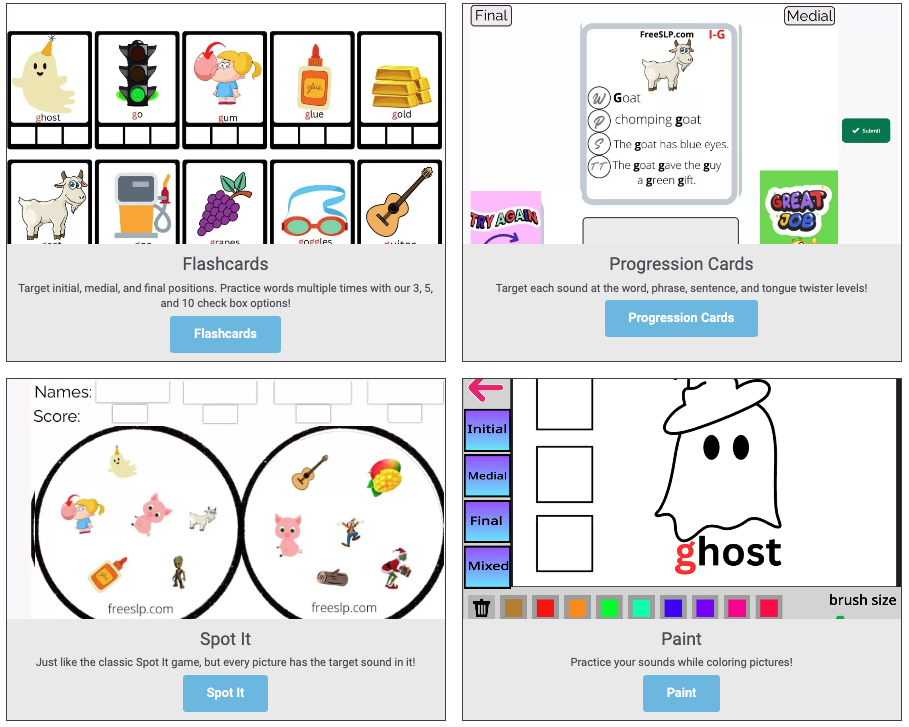
Downloadable Initial G Materials
We also have tons of free no-prep downloadable g sound materials. g sound printables that we currently have include: g flashcards, qr code scavenger hunt, progression cards, spot-it, word finds, tic-tac-toe, bingo, candy land, connect 4, battleship and more if you're looking for more engaging ways to teach the g sound, hopefully you find these materials helpful to view our all free g sound virtual games and materials, click below:, initial g no-prep downloadables.
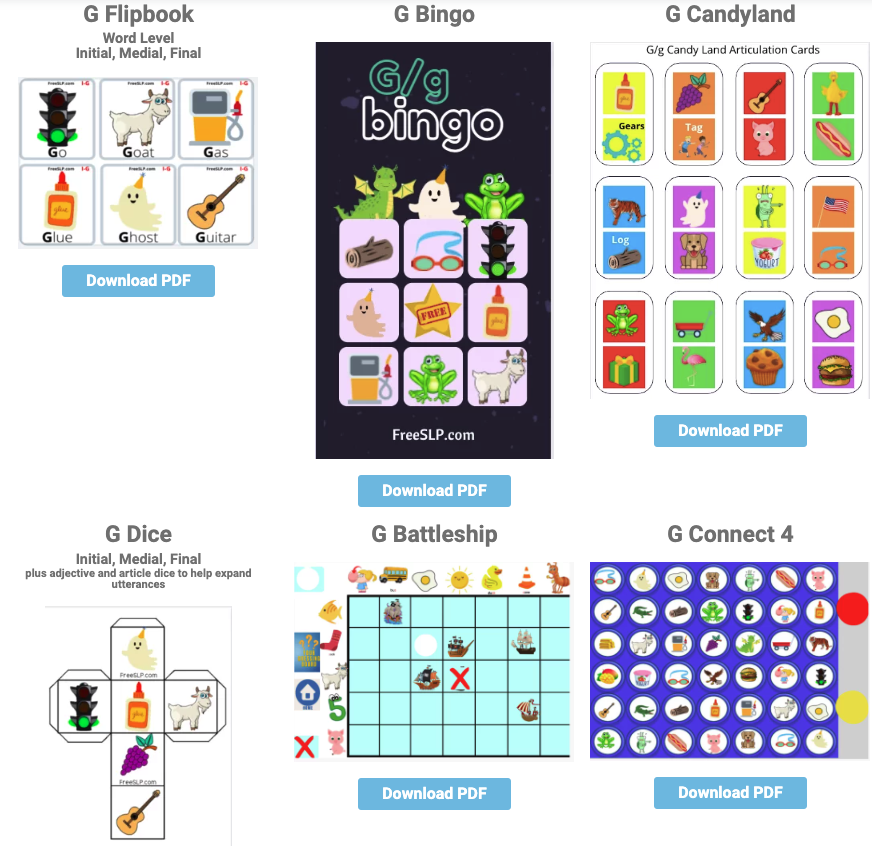
Initial G Sound Animated Videos
Animated videos for each sound teaching how to produce the sound as well as animated articulation adventures for each sound adventure across safaris, space, the world of minecraft, and more while teaching your child how to make awesome g sounds to view our all free g animated videos, click the link below:.
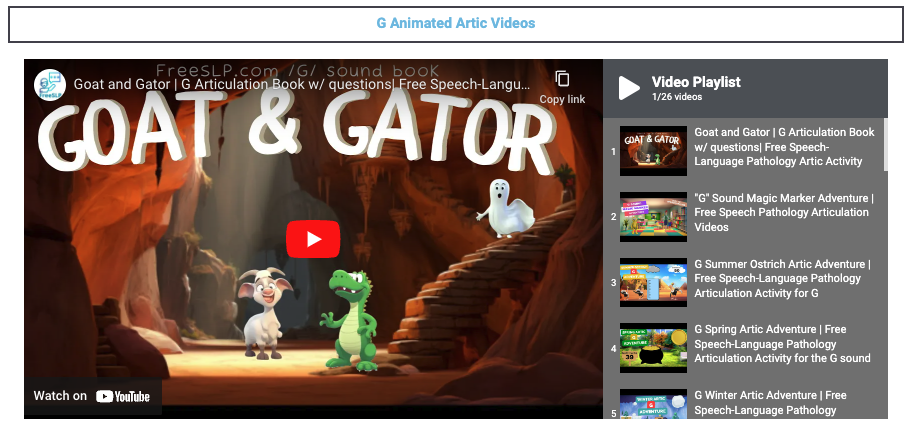
Initial G Artic Hierarchy Activities
Virtual materials to target g from the isolation level all the way up to the conversational level whether you're targeting sounds at the word, phrase, sentence, paragraph, story, or conversational levels, we have free and engaging speech therapy materials for each to view our all free g hierarchy activities, click below:.
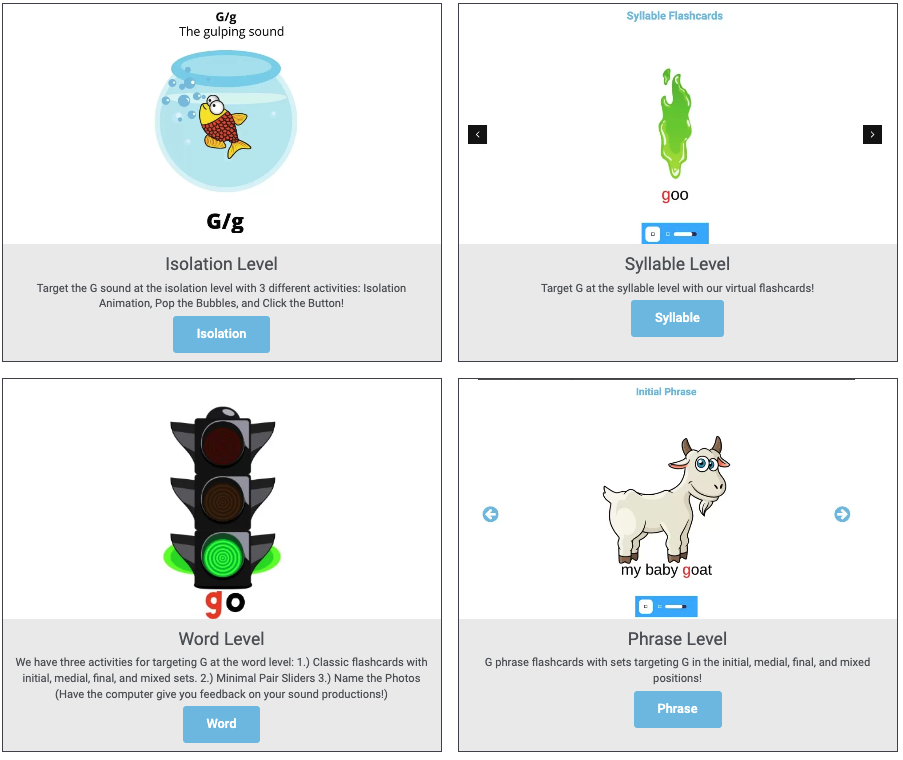
Initial G Filterable Flashcards
Over 1,000+ flashcards that you can sort by target sound, position of sound, syllables, blends, and more add words to your custom word list and print out the flashcards to view our all free g sound virtual games and materials, click below:, initial g filterable flashcards.
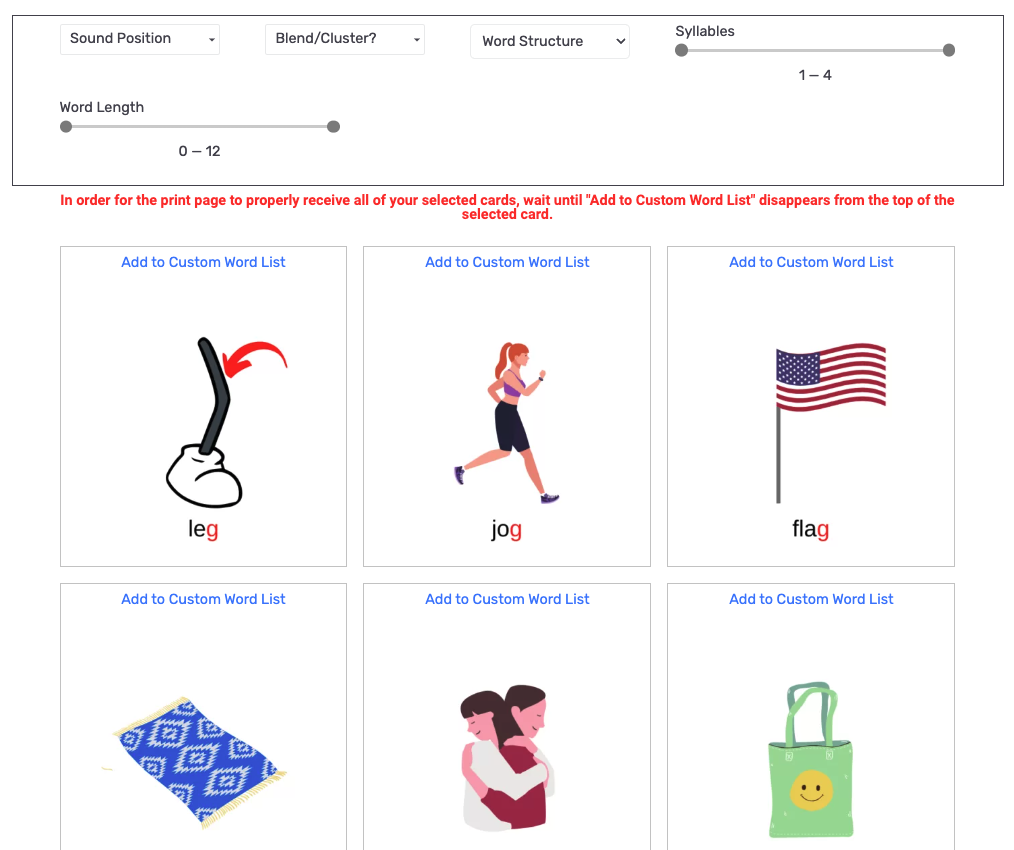
Initial G sound overview page
What age should my kid be able to say the g sound.
Children typically are able to correctly produce the G sound around 3 years old.
Is the G sound a voiced sound?
Yes, the G sound is a voiced sound?
Is the G sound a Dorsal Velar sound?
Yes, the G sound is a dorsal velar sound.
Is the G sound a stop?
Yes, the G sound is a stop.
What is the difference between C / K and G?
The C / K and G sound are produced exactly the same with one exception. The difference between C / K and G is that the C / K sound is voiceless and the G sound is a voiced sound.
50 Initial G Words
40 medial g words.
- Magnificent
35 Final G Words
How do i make the g sound, how to make the “g” sound:.
- Tell the child to bring the back of their tongue(called the dorsum) up to the back part of the mouth(called the soft palate). Lifting up the back part of our tongue stops the airflow from coming out of our mouths!
- Turn on your voice ( voice is the rumbling in your vocal folds. Have your child/client place their hand on their/your neck during the production of “c/k” and “g”, and have them feel the difference between the two. In the production of “c/k”, there should be no rumble or voicing. While in the production of “g”, there should be a rumbling or voicing.)
- Next we lower our tongue and push air out explosively at the same time!
Tricks and Tips for producing the “g” sound:
- Tell the child we are going to trap the air from escaping using the back of our tongue. We need to make a hump or a hill using the back of our tongue and bring it to the roof of our mouth.
- A fun and tasty way to teach the child where to put their tongue for a “g” production is to put some Nutella, peanut butter, sour candy gel, or any other spreadable food they enjoy on the soft middle portion of the back of the mouth(soft palate). Once the child has felt the spot a few times, have them try to blow out air while lowering the tongue at the same time!
- If your child is replacing their “g” sounds with “d” sounds. (“dod” for dog”), try using a tongue depressor to hold down the tip of their tongue which should also help the back of their tongue bunch up.
- Place your hand where the child’s jaw and neck meet, and during “g” productions, lightly push up to help remind them to raise the back of their tongue.
- To visually show the child how we explosively release air from our mouths to produce the “g” sound, hold a piece of string in front of their mouths, and have them try to move the string with the release of air. It is important to remind them to remember to use their voicing during this activity!
- If you have a board game that uses a spinner, have the child see if they can move the spinner using the explosions of air from their mouths.
- Have the child tilt their head back and look up at the ceiling. By doing so, our tongues tend to fall into the back of our mouths into the position we need to make the “g” sounds
- Challenge the child to an imaginary water/juice/milk drinking contest. See you can making the “g” gulping noise the most times in 10 or 30 seconds!
G Sound Overview
If you are looking for tips and tricks on how to produce the perfect G sounds; click the link below:
Virtual Materials for Each Level of Artic Practice:
Target the G sound at the isolation level with 3 different activities: Isolation Animation, Pop the Bubbles, and Click the Button!
Target G at the syllable level with our virtual flashcards!
We have three activities for targeting G at the word level: 1.) Classic flashcards with initial, medial, final, and mixed sets. 2.) Minimal Pair Sliders 3.) Name the Photos (Have the computer give you feedback on your sound productions!)
G phrase flashcards with sets targeting G in the initial, medial, final, and mixed positions!
Target G at the sentence level with our rotating sentences activity!
Our G story is full of G target sounds and tongue twisters! Read it yourself or play it out loud and then repeat it back!
We have two ways to target G at the conversation level: 1.) Silly story scenes full of G target words. 2.) Conversation starter questions.
G Virtual Materials
List of All the Free G Sound Virtual Activities and Games
G flashcards, g progression cards, g soccer shootout, g escape from dragon's dungeon, g fish's flight to freedom, g witch's brew, g summer sundae dash, g fall apple quest, g halloween candy chompers, g thanksgiving treats, g cupid's valentines candies, g marshmallows' mad dash, g unicorn artic derby, g train track dash, g space race, g flashlight finder, g feed the bear, g pumpkin carving, g build-a-snowman, g thanksgiving dinner, g tic-tac-toe, g candy land, g connect 4, g battleship, g artic ninja, g volt runner, g artic clicker, g pizza jumper, g artic cruiser, g space invaders, g spot the differences, g treasure hunt, g crossword, g word find 1, g word find 2.
G Boom Cards
List of All the Free G Sound Downloadable and Printable and Games
G artic qr scavenger hunt, g artic progression cards, g artic spot the match, initial artic g flashcards, medial artic g flashcard, final artic g flashcards, g articulation carrier phrases, g articulation word find, g articulationtic-tac-toe, g articulation coloring sheet, g cartoon character flashcards, g articulation dice, g articulation flipbook, g artic bingo, g artic candyland, g artic cariboo cards, g artic battleship, g articulation connect 4.
G Printables
Free no-prep, virtual, and downloadable options available!
Free SLP articulation word lists, flashcards with pictures, downloadable PDFs and more!
Materials target the G sound in the initial, medial, and final positions!
Whether you are looking for printable, no-prep, or virtual materials, FreeSLP offers free G sound activities for students of every level!
We hope these G articulation activities and exercises for speech therapy help your child / student learn how to make s sounds!
Privacy Overview
- Members Sign Up
- Members Login

- Toddler Talk 2.0
- Toddler Talking 2.0
- Preschool Talk 2.0
- Late Talker
- Speech Disorders
- Language Disorders
- Reading and Writing
- Development
- Speech Therapy
- Read, Talk, Play Tips!
- Speech-Language Activities
- Story Companions
- Baby Activities
- Toddler Activities
- School-Aged Activities
- General Speech-Language
- Articulation
- WH Questions
- Social Language
- Receptive Language
- Grammar Games
- Story Grammar
- Speech Therapy Toys
- Holiday Activities
- Free Home Therapy ideas
- High Frequency Words
- Teletherapy
- Augmentative Alternative Communication (AAC)
- Documentation
- Back To School
- Spanish Materials
- Bilingual Development
- Bilingual Therapy
- Accent Modification
- Zero Prep Articulation
G Word List

If your child is having trouble saying the sound G, my G Word List can help!
If you are a speech therapist and you need some G speech therapy materials, you have come to the right place!
Below you will find lots of free materials!
- First, there is a FREE worksheet (for non-members) and link (for members) to access new articulation materials.
- Second, there is a word list for quick viewing .
- Next, you can sign up for a FREE newsletter and receive A LL THE WORD LISTS in one Folder in your Google Drive.
- After that, check out a brief explanation on how to say the target sound.
- Last, there are ideas for articulation practice that do not require flashcards or word lists. This is the most functional option and appropriate for children working on generalization.
Enjoy the FREE materials!!!
G Worksheets and More!
We have articulation worksheets for teaching, drill practice, generalization, and language-based articulation games!
- If you are a member, simply log in , download, and you are ready to roll here.
- If you want join, sign up here.

To access the free smashmat, just fill out the form below!
21 free smashmats.
Sign up below to receive your free materials.

Google Drive Word List
Sign up with your email address to receive all the word lists instantly! They will be yours now and forever!
I LOVE, LOVE, LOVE Google Drive. I can access my word lists from any device; laptop, desktop, or phone.
If you want a copy, fill out the form above. I put all the word lists in one folder. Once you receive your email with the materials, make a copy of the files and they are yours to use and tweak as needed.
- If you need help saving the word lists to your Google Drive, click here: Save Google Document
- If you LOVE Google Drive as much as I do, check out our Speech Therapy Documentation Page.
Complete G Articulation Packet

This is MY FAVORITE NEW RESOURCE! I HONESTLY use it all the time for each articulation session and handouts for home practice.
The words chosen for speech therapy can make all the difference between a good therapy program and a great one! For the generalization phase, it is crucial to use high-frequency words!! It only makes sense to use words that the client will actually say outside of the therapy room. Right?!
For only $5, you will receive 35 pages of materials including:
- Flashcards that can be used as Cariboo Cards too, yeah!
- Flashcard free games that can be used as home practice
- Dot sheets, smash-mats, and/or coloring pages
- Articulation warm-up sheets which can be used as a goal review sheet
- Flashcards which contain word, phrase, and sentence level practice
- Cut/paste sentence level worksheets
- Self-assessment sheets
- Parent handouts
Check it out here
How To Say G
We say "g" by putting the back of our tongue in the back of our mouth. Some tips to help your child....
- Cue your child to move their tongue to the back of their mouth
- Have your child cough and feel that their tongue is in the back of their mouth
- Lightly touch his/her throat as he/she says "g"
Articulation Games for G
G is an earlier developing sound. Therefore, the games listed below are for younger children. Feel free to tweak them to meet the needs of your child. Take turns with your child saying the desired words. It is important to practice hearing as well as saying the sound.
- G o - Say "go" as you make a car move
- G one - Say "gone" as you hide a toy under a bucket
- G et - Say "get" as you pick up a toy
- Pi gg y - Put a pig in a bag and say "piggy" when you pull it out
- Wa g on - Drag a wagon around the house and put objects in it, say "wagon" with every object
- All G one - Say "all gone" every time you are done with something, i.e., game, food, laundry
- Ba g - Put ojects in a bag and say in "bag" as you do so
- Hu g - Say "hug" as your child hugs you or his bears
- Le g - Say "leg" as you color legs of people in a coloring book
- Di g - Say "dig" as you dig in the sand or dirt
These games can be played at home or anywhere. Adapt any game your child is already playing to squeeze in some fun "G" practice. Have fun!
Membership Site
If you are a parent and your child
- has trouble saying multiple sounds
- needs to work on vocabulary development
- is working on grammar skills
- needs to practice following directions
- is working on narrative language
- needs to work on social skills
AND you want
- a step-by-step guide on how to help your child
- ideas on how to improve all language skills at home
- functional games
Then, our member's site might be just what you need.
If you are a professional and you want:
- Articulation Screening Tools
- Data tracking sheets
- Templates in Google Drive for easy data tracking and graphing
- Homework sheets/parent handouts on articulation therapy
- General flashcard games
- 36 flashcards for each sound: B, D, F, G, J, K, L, M, N, P, R, S, T, V, Z, SH, TH, CH
- 8-10 functional games for each sound
- Language-based worksheets to spice things up!
- Picture description tasks
- Short story stimuli
Our membership might be just what you need.
Thanks For reading!
- Word Lists For Speech Therapy
- G Word List For Speech Therapy
Session expired
Please log in again. The login page will open in a new tab. After logging in you can close it and return to this page.
Latest Posts
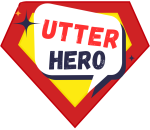
Speech & Language Tips for Parents
G Words in Speech Therapy – G Word Lists, Activities & Teaching Tips
When you’re working on helping your child with their speech and articulation, it’s essential to focus on specific sounds to improve their skills. One of the critical sounds in speech therapy is the G sound. G words can be found in various positions within words: initial, medial, and final. Each position may require slightly different strategies in speech therapy. To address an articulation disorder, speech-language pathologists often use a variety of activities and tools, such as audio recordings, games, and books, to help clients practice the G sound in a fun and engaging way.
A good starting point for working on G words in speech therapy is identifying voice and voiceless pairs. These pairs can help you focus on the correct positioning and airflow needed for accurate G sound production. For example, the voiceless pair for the G sound is the K sound. By practicing words containing both G and K sounds, you can better understand the differences between them and improve your articulation.
Articulation activities play a crucial role in the development of the G sound. Speech-language pathologists often provide clients with word lists containing initial, medial, and final G words. These lists can serve as a foundation for various activities such as flashcards, sentence building, and reading passages. Client-specific activities can also be developed, keeping in mind their interests and preferences.
Constant practice is essential for improving articulation and mastering the G sound. As a client or a speech-language pathologist, incorporating G words into daily routines and communication can be highly beneficial. Encourage conversation, storytelling, and reading materials that focus on G words to reinforce practice and enhance overall progress.
Remember, working on G words in speech therapy is a dynamic and gradual process. As you continue to practice and engage in articulation activities, you’ll notice improvements in your speech and articulation abilities over time. Always approach the process with patience, persistence, and a friendly attitude to ensure success.
Importance of G Sound
Working on the G sound in speech therapy is essential as it helps improve your pronunciation and expands your vocabulary. This voiced sound is a common component in the English language and can be found in various words. Mastering the G sound can lead to a boost in confidence when speaking and communicating with others.
The G sound requires proper articulation, involving the use of your soft palate and vocal cords. When pronouncing the G sound, the back of your tongue should make contact with your soft palate , while your vocal cords vibrate simultaneously. It’s crucial to be mindful of these processes as they play a significant role in producing a clear and accurate G sound.
In addition to the G sound, it’s essential to differentiate it from the /k/ sound in speech therapy. Both the k and g sounds are produced in the same location in the mouth, but with a critical difference: the G sound is voiced, while the /k/ sound is voiceless. Being able to distinguish between these paired sounds can enhance your overall speech clarity and articulation skills.
There are also soft g sounds and hard g sounds. The rule to remember which is which, is as follows: When g meets a, o, or u, its sound is hard. When g meets e, i, or y, its sound is soft .
To sum up, incorporating G sound practice in your speech therapy sessions can greatly benefit your pronunciation, vocabulary, and articulation. Remember to pay close attention to the role of your soft palate and vocal cords, and be aware of the differences between the G sound and its voiceless counterpart, the /k/ sound. Keep up the good work, and your efforts will surely lead to improved speech proficiency.
Teaching Methods for G Words
When it comes to speech therapy, teaching the G sound can be quite an adventure. As a parent of a child who is having speech therapy or is waiting to receive it, there are numerous techniques you can employ to help children master this sound. The key to success is practicing often and incorporating a variety of strategies.
First and foremost, your resources are your best friends. Books, games, and picture cards all offer fantastic ways to engage young learners. A favorite activity among speech therapists is using G Word Lists and Activity Ideas . These lists include initial, medial, and final G word suggestions, along with appropriate games and book recommendations tailored to the G sound.
Since children tend to learn better through play, incorporating games into speech practise sessions at home can be a game-changer. Utilize age-appropriate games that involve the G sound, such as guessing games or picture card matching activities. You may also create your own G-themed games, such as a scavenger hunt where children must find objects that start with the G sound.
While working on the pronunciation of G words, provide your child with ample opportunities to observe their mouth movements. One useful tool for this purpose is a mirror. Encourage them to focus on their tongue placement and the way it feels when they correctly produce the G sound. By allowing children to see and feel the differences in their mouth, they can better understand the necessary actions to produce the G sound.
Flashcards are another excellent resource to use outside of speech therapy sessions. You can create or purchase sets of flashcards featuring G words at various positions within words (initial, medial, and final). These visual aids can help children associate the sound with its spelling and encourage them to practice the G sound in various contexts.
Remember, patience and encouragement are essential when helping children develop their speech skills. By utilizing these various teaching methods for G words in speech therapy, you’ll be well on your way to helping them master the G sound in a friendly and engaging manner.
Role of Word Lists in Therapy
When it comes to speech therapy, word lists play a crucial role in helping your child or yourself develop and practice correct pronunciation of specific sounds. Among these, G words are quite common in language and working on them can significantly improve your articulation skills. So, let’s delve into the benefits of using word lists and explore some essential G word categories.
One of the significant reasons to use word lists in therapy is their ability to provide a structured approach to practicing particular sounds. In the case of G words, there are different types of lists, such as initial G words , medial G words, and final G words . By breaking down the words into groups based on their positions, it becomes easier for you to focus on and master the specific sound within different contexts.
Another advantage of using word lists is their potential to incorporate common vocabularies or target words you’ll encounter regularly in daily communication. This makes your child’s practice more functional, ensuring that they’re not only working on improving sound pronunciation but also enhancing their overall language skills.
Articulation Practice with G Words
Friendly and consistent practice is essential in mastering speech sounds like the /g/ sound. As you begin your articulation practice, remember that the g sound is a back sound, produced when the back of the tongue touches the soft palate in the back of the mouth. To help you understand the right tongue placement, consider checking out some articulation worksheets .
When practicing G words, it’s crucial to have a variety of initial, medial, and final G words to work with. Start with simple words like gum, goat, and dog , progressing to more complex words and phrases as you become more comfortable with the sound. You can find comprehensive G word lists for speech therapy that cater to different speech requirements.
Incorporate various activities into your child’s practice to make it engaging and fun. For example, you could play games, read books focusing on G words , or even create a word treasure hunt challenge. Aim for a minimum of 100 trials in each practice session, focusing on functional words that you regularly use in your everyday conversations.
As you practice, it’s important to remain patient and maintain a positive, friendly attitude. Encourage yourself by celebrating small achievements along the way. Make sure to practice regularly and consistently to reinforce learning and improve your G word articulation in everyday speech.
Remember, mastering the G sound takes time, persistence, and dedication. Keep practicing, use various G words and activities, ensuring proper tongue placement and speech sound production. With consistent effort, you’ll notice improvements in your child’s G word articulation over time.
Specific G Words for Therapy
Incorporating a variety of G words into speech therapy sessions can help clients practice and improve their articulation of the G sound. In this section, you’ll find a selection of G words that may be used in various activities and games during therapy sessions. These words are organized based on their position within the word (initial, medial, or final) and also include compound words and multisyllabic examples.
Initial G Words
Medial G Words
Final G Words
Compound Words
Multisyllabic Words
Additional G Words
Combating Phonological Processes
Phonological processes are simplifications that young children use while learning to talk. They’re a normal part of language development but can become problematic if they persist beyond a certain age. Two common phonological processes we’ll discuss are fronting and context-sensitive voicing .
Fronting : Fronting occurs when a child replaces a sound that should be produced in the back of the mouth, like “g” (as in “goat”) or “k” (as in “cat”) with a sound produced in the front of the mouth, like “t” or “d.” To address fronting, try these strategies:
- Encourage your child to pay attention to the placement of their tongue when they say words with “g” or “k.”
- Use visual cues, such as a mirror, to help your child see where their tongue should be when producing these sounds.
- Practice with minimal pairs, which are pairs of words that differ by only one sound, such as “goat” and “toat” or “cat” and “tat.”
Context-sensitive voicing : This process involves replacing a voiceless sound with a voiced sound. For example, when “pig” is pronounced as “big” or “car” is pronounced as “gar.” To help your child work on context-sensitive voicing, consider these tips:
- Teach them the difference between voiced and voiceless sounds, and practice each sound in isolation.
- Focus on pairs of sounds that have the same place and manner of articulation but differ in voicing, such as /p/ and /b/ or /t/ and /d/.
- Use auditory and visual feedback methods, like listening to recordings of your child’s speech, to help them hear and see the difference between voiced and voiceless sounds.
Remember to be patient and supportive as your child works on these skills. With consistent practice and encouragement, you’ll see progress in combating phonological processes. Good luck!
Therapy Resources and Materials
As a speech therapist or a parent looking for G word resources , there are a variety of helpful materials available to support your speech therapy sessions. Here, we will explore some of the resources and tools that can enhance your therapy sessions and make them more engaging and effective.
To start, consider finding online resources with plenty of articulation activities to keep your sessions diverse, and keep your clients motivated. Websites like Speech and Language at Home or Speech Therapy Talk can be great starting points for finding G word lists and speech therapy activities.
As a member of various professional speech therapy websites and organizations, you can access additional resources, tips, and support from your peers. Make sure to take advantage of professional memberships that offer exclusive content and materials catered towards speech therapists.
Flashcards can be a very useful tool when practicing G words, as they allow the visual representation of the word, as well as the auditory component when spoken out loud. You can find 600+ G Words Lists for Speech Therapy Articulation or create your own set of flashcards, such as boom cards, tailored to your child’s needs.
For more hands-on activities, consider incorporating books into your therapy session that emphasize G words. Reading these books together can provide a fun and engaging way to practice G word pronunciation and improve overall articulation.
Picture cards are another effective way to work on G words in speech therapy. By providing a visual representation of the word, you can help clients associate sounds with their corresponding images. Try using resources like K and G Words, Lists, Materials, and Everything You Need! for picture cards and other helpful tools to supplement your speech therapy activities.
Remember to keep your tone friendly and adapt to the needs of your clients as you explore these resources and materials. Your dedication to enriching their therapy experience can go a long way in promoting progress in their speech and communication development.
By Michelle
Related post, consonant digraphs: what they are and how they work, what are underextension and overextension in linguistics, short oo words – examples & rule for the short oo sound, leave a reply cancel reply.
Your email address will not be published. Required fields are marked *
Save my name, email, and website in this browser for the next time I comment.
What is Echolalia? Understanding the Repetitive Speech Phenomenon
How many words by 18 months a guide to your toddler’s language development.
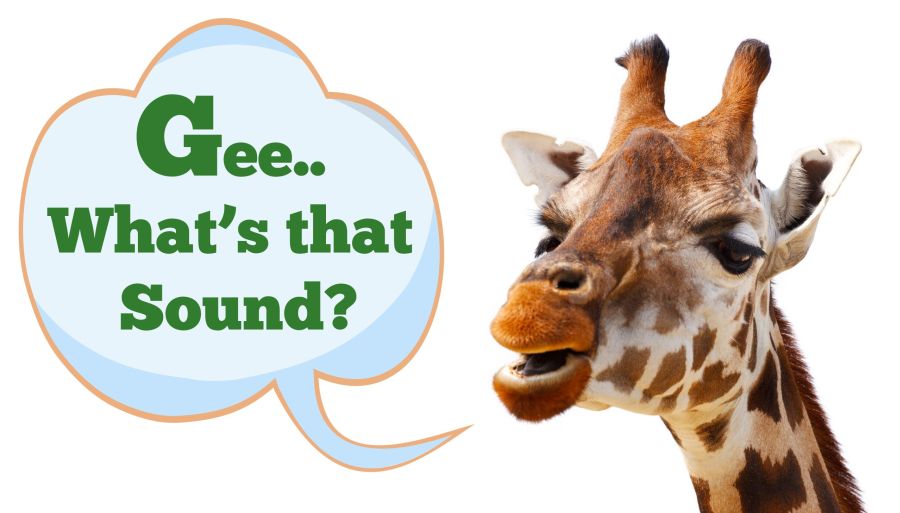
Teaching the Sound of Letter G
Teaching the Sound of G. Image courtesy of www.pronuncian.com
“Dess what Mommy?” “Where is the dod?, “When are we donna be there?” Are these familiar questions around your house? Is your son or daughter making a “d” sound in place of a “g”? Or, leaving the “g” sound out all together? If so, don’t fret. Most children under the age of five have some trouble correctly pronouncing certain sounds and words. While most children will usually mispronounce words at some point in her growth, the majority of children outgrow these mispronunciations and master correct sounds by certain ages. And, to make things even more complicated for your young child, there are two distinct sounds of “g” that he or she must perfect: a hard g and a soft g. Is there a way to help guide your child? YES! Here are some tips and tricks for teaching your child the sound of letter g.
Rules for Teaching the Sound of The Letter G
There are rules determining whether or not the sound of letter “g” is hard as in “good”, or a soft sound as in “giant”. The most common rule to remember how to pronounce the sound of the letter “g” is to pay attention to the letter following the “g” in that particular word. However, like many other rules in the English language, there are exceptions. Here are a few key rules:
- Hard g before a consonant (as in g lad or g reat)
- Hard g before a back vowel ( g o, g arden, g um)
- Hard g at the end of a word (bi g , fro g , le g )
- Hard g if it’s a Hebrew name ( G ideon, G iliad)
- Hard g before a front vowel in most words of Germanic origin ( g ift, g et, g ild)
- Soft g for a word of Greek origin that starts with gy- ( gy mnasium, gy mnastics, gy roscope).
- Soft g before a front vowel if the word has a Romance origin ( g eography, g iant, g inger, g eneral)
As we mentioned, there are always exceptions. Can you think of words that include both a hard “g” sound and a soft “g” sound? How about the words language, or garage! The sound of “g” is also called a “ voiced sound ” — one in which the vocal chords vibrate. Rachel’s English does a great job demonstrating how to correctly pronounce the sound of the letter “g”.
When Can I Expect My Child to Perfect the Sound of G?
The short answer is usually around the age of three. The longer answer is it depends. There are certain speech development milestones that your child is expected to meet, according to his or her age. Our friends at Mommy Speech Therapy have a terrific graphic that spells out speech milestone expectations. This Speech Sound Development Chart from Goldman Fristoe outlines what age your child should be expected to perfect each sound in the English language.
Speech Sound Development Chart by Goldman Fristoe. Image courtesy of Mommy Speech Therapy
It is during the first 3 years of life, when your child’s brain is developing and maturing, that is really the most intensive period for acquiring speech and language skills. All children vary in their development of speech and language skills. The milestone checklist serves as a guide to determine the normal development of speech and language skills birth to age 5. Of course, the rate of development is different in every child, as some may hit these benchmarks early, or some may be later than the norm. Don’t be alarmed if your child is not achieving these milestones exactly as they are presented on the chart. Instead, these guidelines are there to help doctors and other health professionals determine if your child is on track or if he or she may need extra help. Sometimes a speech delay or articulation disorder may be caused by hearing loss, while other times it may be due to a speech or language disorder.
Go On, Get Practicing!
One tip that may be useful is to have your child practice gargling water. When you gargle water, your tongue is in the same correct position as it needs to be to correctly pronounce the sound of the letter “g”. Give it a try! Also, don’t forget that you are your child’s best role model. Practice saying the “g” sound around the house in conversation, read books together and emphasize that sound (both the soft and hard sounds). Soon enough, your child will be “giddy” that he can make the perfect sound of “g”.


Initial G Sound Words for Speech Therapy
Free initial g sound words for speech therapy printable flashcards featuring words with the "g" sound can be a useful tool for improving pronunciation and vocabulary. some of the flashcards included in this worksheets are:- game, goose, garden, glass, guitar, glass, ghost, girl, gum, gift, grape, grass, goat and garlic..

Download Printable Free Initial G Sound Words Articulation Flashcards


Free G initial words list and 40 flashcards
G initial words.
Here are a couple of initial G words lists, 40 free PDF flashcards, and some example sentences that can be used for pronunciation exercises. These resources can be used for articulation lessons with ESL learners and speech therapy for any speakers who have issues making the /g/ sound.
The printable Word list above features just over 100 words with the initial G sound. While the list below contains 200 words.
What are G initial words? They are simply words where the /g/ sound appears at the beginning of the word. If the sound occurs in the middle of a word it is known as the medial position. If it is at the end, it is in the final position.
G initial words list
This list of words with the initial G or /g/ sound is much more comprehensive than the PDF above. It has been organized in alphabetical order to make navigating it easier. You can use this list to create your own initial G word activities.
It should be noted that while the majority of this list contains the hard G sound there are also instances of soft G words , and even a few instances of a silent G.
G inital words flashcards
Next, we have some beautiful flashcards of G initial words with real photographs and words. All 40 flashcards use the hard G sound. These are great for playing games and make learning enjoyable.
You will also find that learners are much more interested in practicing this area of pronunciation when they are presented with these visual teaching aids.
The 40 words on these printables are –
Sheet 1 – galah, galaxy, gallop, garbage, garlic, gas, gate, and gator.
Sheet 2 – gecko, glass, glide, glow, goal, gonna, goat, and goggles.
Sheet 3 – gold, golf, gong, goose, gorge, gorilla, gourd, and gown.
Sheet 4 – grain, grape, grate, gravy, Greek, green, grid, and grill.
Sheet 5 – grin, grind, grow, guard, guava, guitar, gulf, and gum.
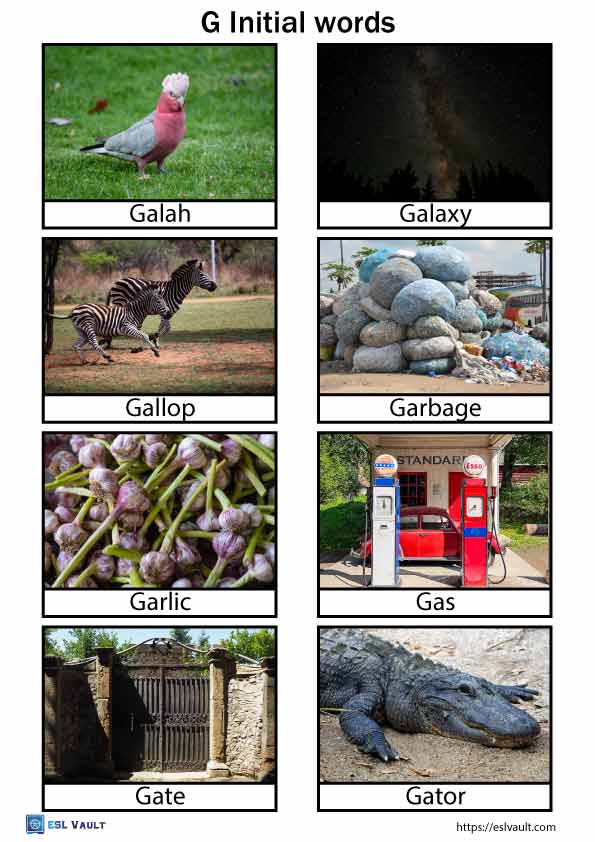
Practice sentences with G initial words
Try these simple yet fun sentences for learners looking to practice initial G words.
The girl is going to Ghana.
A gliding golden goose.
The gorilla grabbed the grapes.
A gecko in a guava garden.
Growing green Greek gourds.
She’s got grilled goose with garlic gravy.
Gary gave a goat a gift.
A glowing glass ghost.
Gazing at gaunt gazelles grazing gracefully.
Go and get the guitar gear.
Gabrielle got good grades.
Related activities
For some challenging initial G words practice, check out the letter G tongue twisters.
For some more flashcards, word lists, and pronunciation tips, try the G and D minimal pairs as well as the K and G minimal pairs .
You might also like these

26 funny tongue twisters with M

32 free QU words with pictures

Free oi and oy words list and 32 cards
Free ESL and English teaching resources, no sign up required. Just find what you like, download it and head to class!
Privacy Policy
Share ESL Vault with your friends!
- Writing Worksheets
- Vocabulary Worksheets
- Pronunciation
- Kids worksheets
- Idioms and Expressions
- ESL Puzzles
- ESL Pair Work Activities
- ESL Conversation Questions
- Coloring Pages
- Articles, Lists and Ideas
- Art and Craft Activities


How to Teach the G Sound by Chicago Speech Therapy
The /g/ sound and the /k/ sound are very similar and use the same mouth position. So what makes them different? The /g/ sound is a voiced sound and the /k/ sound is unvoiced . That means that your vocal cords are vibrating as air is passed through the mouth to make the /g/ sound. Position the back of your tongue at the near the back of the roof of your mouth, on what is called the soft palate . When you allow voiced air to come through, it is stopped by your tongue and then released when you lower your tongue from the top of your mouth. This is the /g/ sound.
Kids will begin making this sound at an early age and will typically have mastered it by age 3. If your child still isn’t able to successfully produce the /g/ sound by age 4, it is highly recommended that you seek the intervention of a certified speech therapist to help your child get back on track. The sooner you catch an issue, the easier it will be to correct. Early help will also lessen the likelihood of a small problem snowballing into a bigger one in later years.
Practicing sounds with your child is a fun and educational way to spend time with your little one. By focusing first on sounds, then syllables, and finally words, sentences and even conversations, you can help foster your child’s ability to effectively communicate. This is also a great way to keep track of your child’s progress and ability so that you can identify whether they are ahead, average, or perhaps a little behind.
Here are some great tips for getting the /g/ sound with your child:
- Verbal cues
When your child is learning a particular sound, it is important for them to have a clear understanding of what the sound is and how it sounds. Communicate this to your little one by clearly and slowly pronouncing the single sound for your child: “/g/, /g/, /g/.” They will begin to imitate you and try to make the sound themselves. Once they master the individual sound, move on to simple syllables by adding vowels to the /g/ sound, such as “goo, goo, goo”, “gay, gay, gay”, and “go, go, go.” Now your toddler is on his way to /g/ words!
- Physical Cues
For some kids, it can be difficult to figure out where their tongue should go and how to get it there for this sound. One solution is to have them lie on their back and then try to make the sound. Since gravity naturally pulls the tongue further back when they are in this position, it is easier for them to make the correct tongue-palate contact. Once they can produce the /g/ sound while lying down, have them practice it again standing up. Another trick for the /g/ sound is to try gargling water. This strengthens the tongue muscles and puts their tongue in the correct position for the /g/ and /k/ .
- Tactile Cues
Since /g/ is a voiced sound, your vocal cords vibrate as you say it. Have your child feel this by putting their hand over your throat as you articulate the sound. It will be brief, but they should be able to feel the vibrations. Have them try this with their own voice to see if they are pronouncing the /g/ sound correctly.
- Awesome /g/ Activity
There’s a reason why “gurgle” starts with the letter “g.” You use the same inner-mouth movements to gurgle as when you make the /g/ sound. If your child has demonstrated that he is able to gurgle—like when he brushes his teeth—you might try asking him to gurgle without any water. The motion of raising the back of the tongue to the soft palate that he makes when he’s “gurgling” is the same motion he needs to make the /g/ sound.
Are you concerned about your child’s progress in speech and language development?


Word Lists for G Sound
- January 1, 2021
- Activity Type , Articulation , G Sound , Materials , Speech , Word Lists
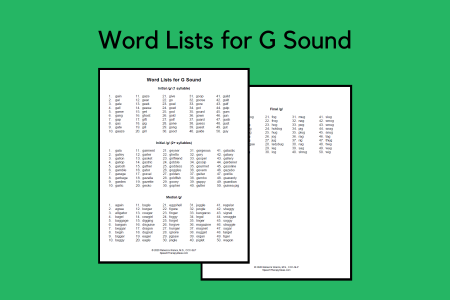
No more trying to come up with words off the top of your head! Word lists make it SO much easier for you when having students practice targeted sounds and are great for auditory bombardment. With this file, you’ll have 200 words that include /g/ at your fingertips!
Included are:
- Initial /g/ (1 syllable) – 50 words
- Initial /g/ (2+ syllables) – 50 words
- Medial /g/ – 50 words
- Final /g/ – 50 words
/s/ Sound – Basic Set
This basic set includes: Ideas and instructions for the enclosed materials Picture cards…
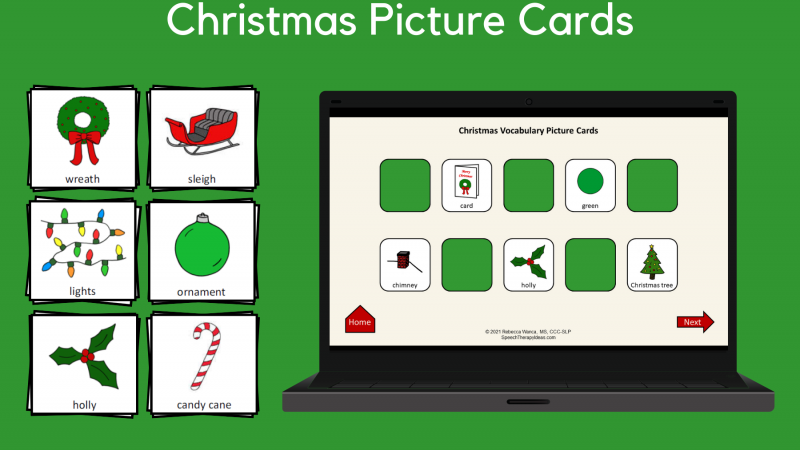
Christmas Picture Cards
These Christmas picture cards have so many uses that you'll be able use them to…
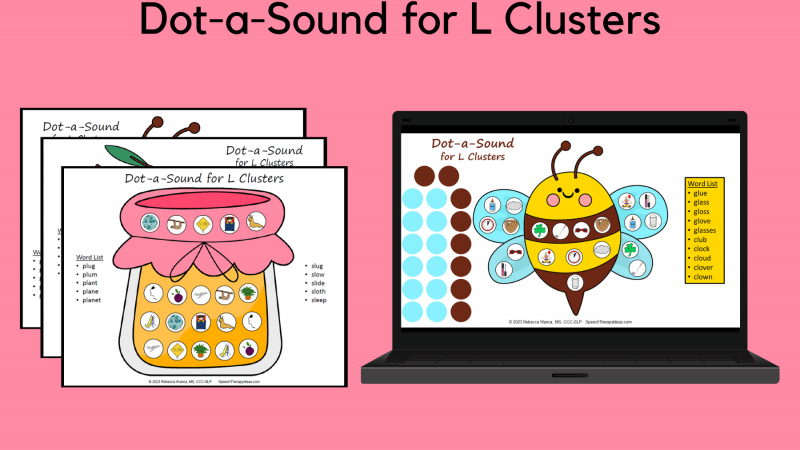
Dot-a-Sound for L Clusters
Get your students talking and dotting with these speech materials! With the printable pages, students…
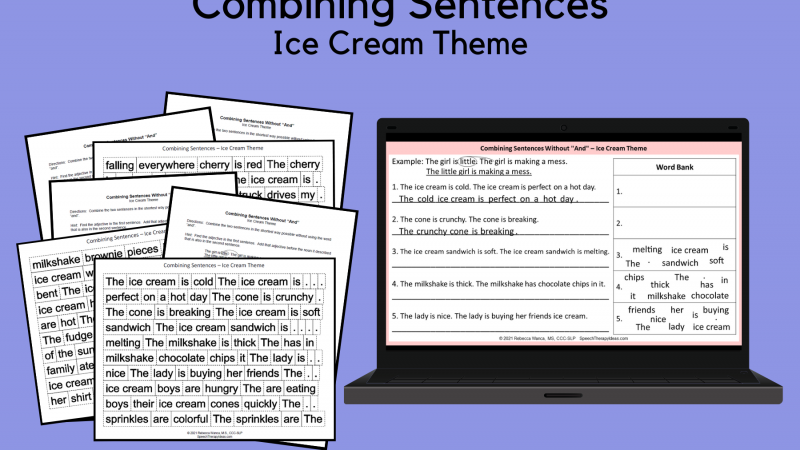
Combining Sentences – Ice Cream Theme
This language skill is one that many students find challenging until it has been explicitly…
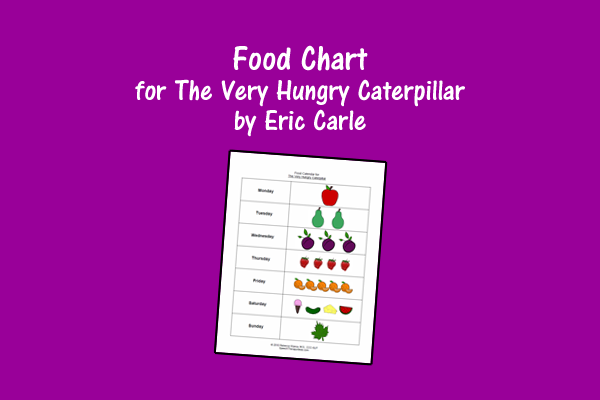
Food Chart for The Very Hungry Caterpillar
This printable page corresponds to Eric Carle's book The Very Hungry Caterpillar. It shows the…
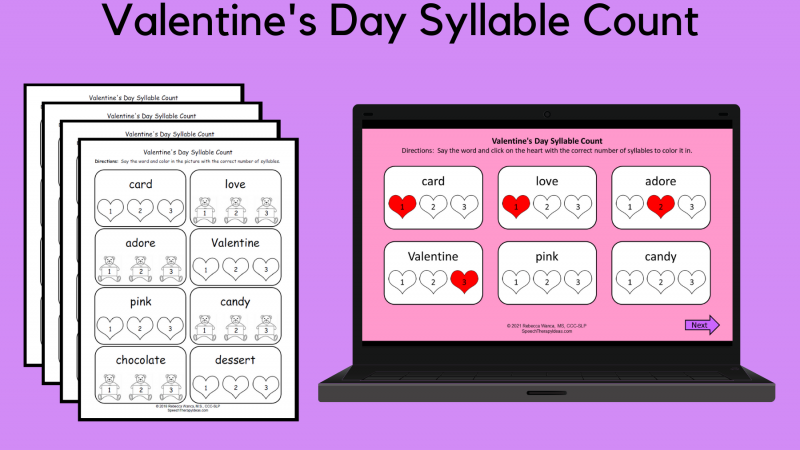
Valentine’s Day Syllable Count
Practice tapping out the syllables for Valentine's Day words with these "no prep" worksheets! The…
- previous post: Rebus Sentences for F Sound
- next post: Say and Color – Hearts
Any call to action with a link here?

The BEST K and G Words (Speech Therapy)
If you’re a speech language pathologist looking for activities, ideas, and articulation word lists for k and g words speech therapy practice, then you’re in the right place! This blog post explains the correct tongue position for k and g sounds. In addition, this article lists the most common substitutions for k and g, as well as articulation therapy tips for eliciting k and g sounds. Read on for k and g words speech therapy lists, and make sure to check out the recommended articulation activities for practicing these sounds!

This post contains affiliate links, which means we could receive a commission if you click a link and purchase something that we have recommended.
Why Does a Speech Therapist Target K and G Words (Speech Therapy)?
A speech-language pathologist often targets k and g words in speech therapy.
Many children, especially young children, have a hard time correctly producing k & g.
SLPs teach the correct placement for velars and practice the target sound (k,g) in words, short phrases, and at the sentence level.
It is important to target a variety of articulation sounds as children with speech sound disorders may be at risk for reading disorders .
Reference:
Sices, L., Taylor, H. G., Freebairn, L., Hansen, A., & Lewis, B. (2007). Relationship between speech-sound disorders and early literacy skills in preschool-age children: impact of comorbid language impairment. Retrieved from https://www.ncbi.nlm.nih.gov/pmc/articles/PMC2755217/#:~:text=Disorders%20of%20articulation%20or%20speech,phonologic%2C%20and%20verbal%20memory%20skills.

Correct Position for K and G
Both k and g sounds are velars and stops.
These velar consonants are both considered to be a “back sound”- or speech sounds made “in the back of the mouth”.
The correct tongue placement for both k and g involves the back of the tongue lifting to make contact with the soft palate.
At the same time, the front part of the tongue (tongue tip) is placed behind the lower front teeth.
A seal is formed for velar sounds and air pressure builds.
This is a quick movement. You will hear the velar sound with the burst of air that is released.
To feel this, put your hand near the front of the mouth during k and g production.
K is a voiceless sound. That means the vocal folds do not vibrate during the production of /k/.
G is a voiced sound. This means the vocal cords vibrate when saying /g/.
Have your student feel their throat while producing /k/ and then /g/ to feel the difference between voiced and voiceless sounds.
Reference: Peña-Brooks Adriana, and M. N. Hegde. Articulation and Phonological Disorders: Assessment and Treatment Resource Manual , PRO-ED, Austin, TX, 2007.
The Most Common Substitutions for K and G
Many different types of speech sound disorders can impact a child’s speech intelligibility.
This is an umbrella term that can include articulation disorders, phonological disorders, and motor speech disorders (such as childhood apraxia of speech ).
Phonological processes, including velar fronting or final consonant deletion , can impact the correct production of k and g sounds.
Need a breakdown of speech pattern simplifcations? Read about the different phonological processes .
Articulation Therapy Tips
Need a great way to teach the k&g sounds?
There are different ways to elicit these sounds during direct instruction therapy tasks.
- Try auditory bombardment. Read word lists or children’s books that contain k and g sounds.
- You could try instructing a child to “Lift the back of your tongue”- but I like to focus on the tongue tip as a better visual cue . I instruct my students to say their “low T” sound- and have the tip of their tongue touch the gumline behind their front bottom lower teeth.
- Minimal pairs can be very effective when targeting velar sounds.
- Use your hand as a visual for correct tongue placement.
- Use gravity! Have your student lay on their back while practicing these sounds.
- A certified SLP could try using a tongue depressor to assist with lingual placement. This would only be recommended for a child who is comfortable with this method.
- Working with younger students? I love doing “feed the….” activities, which would be appropriate in early intervention or with preschoolers. Check out this crocodile hand puppet that can be fed small objects. Work on target words like “ick” and “yuck”.

Resource Pictured: Speech Sound Mouth Cards
Home Practice Ideas
Parents can help students work on the k and g sounds at home.
One idea might be to provide parents with an auditory bombardment word list .
Parents could read k or g words.
Their child should listen but not repeat the words.
Once a student can say the k or g sounds in isolation, they might practice simple CV or VC sound combinations (such as “go” or “ick”).
Finally, going on a scavenger hunt around the house for k and g words can be a fun activity.
Here are /k/ words that a child might find around the house:
G Word List
Are you looking for an articulation word list that contains g in the initial, medial, and final position of words?
This blog post contains g articulation word lists that can be used during your speech therapy session.
K Word List
Here is a word list for initial k, medial k, and final k words that speech pathologists can use in therapy.
These speech words can be paired with a game or a fun activity.
Articulation Word Lists
Do you need more articulation word lists to use in your speech therapy sessions?
Check out these handy lists:
- Multisyllabic Words (1-5 syllables)
- Cluster Words (S Blends)
- S Word Lists
- L Word Lists
- F Word Lists
- K Word Lists
- TH Word Lists
- R Words for Speech Therapy
- Z Word Lists
- V Words for Speech Therapy
- G Words for Speech Therapy
- SH Words for Speech Therapy
K & G Words Speech Therapy Activities
Are you a speech therapist searching for a fun way to practice target words in speech therapy?
If you are working on k and g sound production, be sure to check out these engaging resources.
- Speech Sound Mouth Visuals
These speech sound word cards will be unlike any you’ve ever owned.
You will be able to target a variety of speech sounds in the initial position, middle position, and end of a word.
First, these are a practical type of speech room decor – I hang them up on my wall!
Next, these articulation cards are in the shapes of mouths- so you’ll have the ultimate handy visual during articulation therapy.
Finally, these cards can be laminated for unlimited use.

Try these speech sound mouth cards to work on speech sounds at the word level.
Minimal Pairs Activity Play Dough Smash Mat
If you are working on fronting, these minimal pair activity sheets will be perfect to pair with play dough or a magnetic wand and chips!
This Minimal Pairs Bundle includes minimal pair pages for a variety of phonological processes, including:
- cluster reduction
- initial consonant deletion
- final consonant deletion
- voicing and devoicing

The velar and palatal fronting packet is included in the bundle.
How To Use The Minimal Pair Pages
An auditory bombardment word list is included on every page.
For example, if you are targeting the initial k sound, a list of initial k words is provided at the bottom of the page.
Your student would listen as you read the words, but not repeat them .
Next, you can do an auditory discrimination activity with your students. Which sound did they hear? I have my student give a thumbs up or a thumbs down to indicate if they heard (or did not hear) their target speech sound.
Finally, your student can practice minimal pairs .
If you are working on velar fronting, you’ll choose a specific page with either k or g words.
Magical Minimal Pair Worksheets and Activity Pages
This Magical-Themed Minimal Pair Bundle also targets fronting!
Every phonology activity contains both a color and low ink option, so it’s perfect for on-the-go. Just print!
If you wish, you can laminate the color pages.
In addition, this packet is FUN!
Let imaginations SOAR with this magical packet!
Adorable wizards, gnomes, fairies, and dragons decorate every page.

This Magical-Themed Phonology Bundle includes cluster reduction, voicing and devoicing, initial consonant deletion, final consonant deletion, fronting, and backing activities.
The fronting activity packet (which is included in the bundle ) contains the following minimal pairs:
- k vs t initial
- k vs t final
- d vs g initial
- d vs g final
- sh vs s initial
- sh vs s final
This will also you to target both velar and palatal fronting.
Articulation Tic-Tac-Toe Worksheets
Have some dot markers on hand?
Or perhaps a magnetic wand and chips ?
Perfect, because you’ll want to use them with this Articulation Tic Tac Toe resource!
A variety of speech sounds are targeted, including k and g.

Each page features words with one target sound in the initial position, medial position, and final position.
Your student will practice saying a word before each turn at the game.
If desired, your student could also generate short sentences using the target word!
K & G Mixed Groups Resource
School speech-language pathologists are often trying to see a large caseload while working around 15 or more teacher schedules, special schedules, and activity schedules.
This is in addition to fitting in IEP meetings and paperwork!
It can be a tough balancing act!
This often leads to seeing students in groups- and sometimes, the goals don’t always match up.

One student might be working on articulation, and another might have expressive or receptive language goals !
This Mixed Groups Bundle for Speech Therapy offers the solution.
One page is selected based on the target speech sound (such as the initial k sound, which is provided in the K & G Mixed Group Resource ).
Articulation words are sorted by noun or verb.
While one student works on articulation, another student can work on language goals- using the same target words.
In summary, this article provided a variety of k and g words speech therapy lists (see k words and g words ).
In addition, this article explained why a speech-language pathologist might target k and g words in speech therapy.
Read the article to better understand the correct lingual positioning for k & g.
Several elicitation tips are recommended for teaching velar sounds.
Related Speech Therapy Articles:
- Try These Beneficial Fronting Activities for Speech Therapy
- The Different Phonological Processes (List for SLPs)
6 Quick (and Easy) Speech Therapy Activities for Preschoolers
- Children’s Books for Speech Therapy: The Ultimate List
Finally, here are some effective resources to target k and g words in speech therapy:
- Minimal Pairs Activity Pages for Play Dough
- Magical-Themed Minimal Pairs Pages
- Articulation Tic Tac Toe Worksheets
- Mixed Groups Speech and Language Bundle for Speech Therapy
Similar Posts
Z words for speech therapy (word lists and activities).
Need z words speech therapy lists? If you’re a speech-language pathologist looking for a quick list of initial z words and final z target words to practice during speech therapy, make sure to bookmark this post. You’ll also find some great ideas for making therapy more fun with a variety of engaging games, resources, and…
Need 3 Proven Sequencing Activities? (Speech Therapy Ideas)
Are you a speech-language pathologist targeting the sequence of events in your therapy sessions? This blog post suggests interactive sequencing activities speech therapy printables that are perfect for speech-language pathologists to use while targeting language goals. It also explains the importance of targeting this foundational skill for comprehension and language expression. This post contains affiliate…
19 TOP Speech Therapy Materials (SLP Must Haves)
Here are my TOP speech therapy materials- the MUST HAVES for being a school SLP! When I’m working with my speech and language students, there are certain “must have” materials that I need by my side the entire day. These are items that provide quick ways to motivate students or help me provide speech therapy…

Are you a speech-language pathologist looking for speech therapy activities for preschoolers? This article contains tons of effective activities and speech therapy ideas that will motivate young children to work on a variety of goals. It includes tips for engaging preschoolers during speech therapy sessions, as well as ideas for movement, sensory play, and recommended…
Google Classroom Tutorial: The Basics for SLPs
Are you an SLP trying to learn the basics of Google Classroom? At the time that I’m writing this post, there is a global pandemic. Schools are closed, and many of us are providing speech therapy services through some form of distance learning. A few years ago, I received my Google Level One Certification. And…
4 Beneficial (and Easy) Voicing Speech Therapy Activities for SLPs To Try
Searching for some effective voicing speech therapy activities? Speech-language pathologists often need voicing activities when working with young children or school-aged children who have articulation or phonological disorders. This article provides suggestions for voicing activities. Speech production can be impacted by a phonological disorder, and voicing can negatively impact the intelligibility of speech sound production….

50+ Best K and G Speech Therapy Activities (Free and Fun)
K and g speech therapy activities: effective techniques for articulation improvement.
If you are a speech therapist working on articulation therapy for the K & G sounds, then you are at the right place. In this blog post, we want to provide you with activities that specifically target the production of the ‘K’ and ‘G’ sounds. Articulation disorders and errors are common for these target sounds. These errors can affect a child’s speech, impacting their ability to communicate effectively.
A great way to address these specific sounds in your speech practice, is to use a variety of techniques and tools. From one speech therapist to another, I wanted to make your therapy sessions easier, so in this blog post we will review how to correctly produce these speech sounds, give you a list of over 50 fun activities to do to practice correct sound production of ‘K’ and ‘G’ in your therapy sessions, as well as provide you with a great ‘K’ and ‘G’ articulation bundle freebie to start practicing these target sounds today!
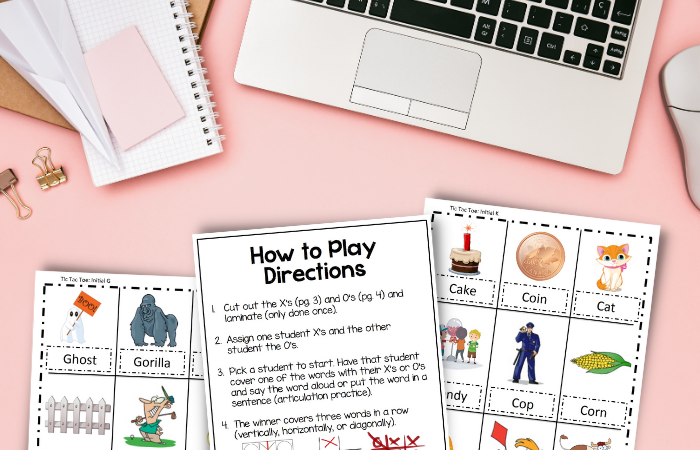
K and G Sound Articulation Techniques
We’ll focus on effective speech therapy techniques that aid in the correct articulation of K and G sounds. Our approach is segmented into understanding tongue placement, engaging in activities to enhance back sound articulation, and utilizing the minimal pairs approach to distinguish between target sounds.
First, let’s review some basics.
Speech Sound Fundamentals
Understanding and working with speech sound production is critical in speech therapy. Key components we attend to are:
- Tongue Placement : Crucial for accurate articulation. For example, for back of the mouth sounds, the back of the tongue rises towards the soft palate.
- Back of the Tongue : This is important for producing sounds like “k” and “g”, which are formed at the back of the mouth .
- Soft Palate : The soft part at the back of the roof of the mouth must be manipulated correctly for certain sounds.
- Vocal Folds : We ensure they function properly for voiced sounds.
We can use tools such as a tongue depressor to facilitate correct tongue placement and exercises that help strengthen the muscles involved in speech.
Tongue Positioning for K and G Sounds
Proper tongue placement is crucial for the correct production of K and G sounds, which are back sounds. For the K sound , the back of the tongue elevates to touch the soft palate, creating a burst of air when released. For the G sound , this placement is similar, but the vocal cords vibrate.
- Raise back of the tongue to the soft palate.
- Create tension before releasing a burst of air.
- Ensure vocal cord vibration for G sound.
Activities for Back Sound Articulation
Speech therapy activities geared towards K and G sounds involve exercises that encourage the correct placement of the tongue for back of the mouth sound articulation.
- Articulation Bundle : A sequence of targeted exercises that focus on sound production.
- Mirror Exercises : Practicing in front of a mirror helps visually confirm tongue placement.
- Blowing Activities : Use activities like blowing bubbles to strengthen muscles necessary for the burst of air required in these sounds.
Minimal Pairs Approach
The minimal pairs approach is a technique that contrasts words differing by only one sound to refine articulation. This method helps individuals distinguish between similar-sounding words, enforcing the correct placement and production of K and G sounds.
- “Come” vs. “Gum”
- “Card” vs. “Guard”
- “Back” vs. “Bag”
Using these pairs in practice drills aids in reinforcing the relative tongue placement and sound articulation for each word.
Specific Techniques for K and G Sounds
When addressing the pronunciation of K and G sounds, it’s crucial to incorporate techniques that engage multiple senses to solidify learning. We’ll explore tactile and kinesthetic strategies as well as methods for enhancing auditory discrimination.
Tactile and Kinesthetic Methods
Tactile and kinesthetic approaches involve physical touch and movement to teach the correct placement and motion for the K and G sounds, which are back sounds. Here are specific strategies:
- Place a finger on the throat : Children feel the vibration of their own voices, discerning between voiced (G sounds) and voiceless pairs of sounds (K sounds).
- Use a mirror : Watching their own tongues can help children understand where the back of the tongue needs to raise to make the K and G sounds.
- Quick movement exercises : Guide children to move their tongues quickly to the correct position, reinforcing the muscle memory required to produce these specific sounds.
Auditory Discrimination for K and G Sounds
Auditory discrimination is crucial for distinguishing between similar sounding phonemes. For K and G sounds, which are front sounds, we can employ the following activities:
- Minimal Pairs : Introduce pairs of words that only differ in the K or G sound (like “cold” and “gold”) to sharpen listening skills.
- Phoneme Isolation : Practice saying words that contain the target sounds, emphasizing the K or G sound so

K & G Resources and Activities
Below you will find a comprehensive list of over 50 ‘K’ and ‘G’ Sound Articulation Activities and Resources!
K & G Initial Sounds
- Initial g and k words speech “fishing” homework freebie by Saidi Marshal is a set of homework sheets with 12 words per page. This is a fun way to practice K and G at the word level!
- FREE Initial K & G Articulation Sound-Loaded Sentences Worksheet by the Speech Spot Creations is a speech therapy worksheet that has target words that start with K and G. Start practicing your students phonological process with this highly rated freebie!
- ARTICULATION CARDS Students can color & keep: Initial K & G FREE! By The Beachy Therapist is a resource with single words and a letter name on a card for students to practice their articulation skills with initial K & G!
BONUS: Our shop store has some amazing articulation bundles! Grab this bundle of over 20 sound decks of cards (Initial, Medial and Final K & G included) for $14. We love sending these home for students to color as homework, then using the deck of cards to play a ton of different articulation games in their speech therapy session. Or have them play those games with family at home!
K & G Final Position
- English & Spanish Articulation K & G Sound Spring Printable for Speech Therapy by Bilingial SLP LLC is a fun spring themed printable to practice final K & G. We recommend this resource for your elementary students.
- Speech Therapy: Final /k/ and /g/ words “fishing” homework by Saidi Marshall is a great resource to have students practice k and g sounds at the end of the word.
- Frog and Pond Speech Therapy Game with Final G Articulation Cards by Speech Sprouts is an engaging final g drilling activity that students love!
Activities with Visual Cues
- Speech Sound Cue Cards – FREEBIE by Lauren Walters is a great resource to have that reminds children with visual cues what theirs mouth should look like as they say a letter sound.
- Final Consonant Deletion: Boat Theme by Speech With Miss Chelsea is an engaging articulation game with the sounds K & G included. Students are given multiple visual cues such as they boat and sentence strips as they practice K & G sounds and build in complexity level.
- Articulation and Speech Sounds visual support BUNDLE (FREE) by Free Speech Goodies is a pack of 11 pages with visual cues on how to pronounce multiple sounds including K and G.
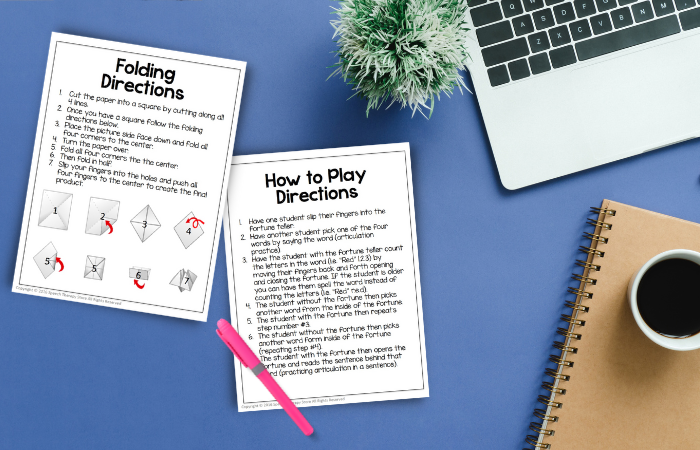
Tactile Activities
- Shape and Say Articulation: Winter Theme Free by Miss Gardenia’s Speech Room is an engaging activity that has students build pictures with shape tiles as they practice their language skills. This activity includes lots of letter sounds including K & G!
- Counting Bears Early Sounds Articulation Mats FREEBIE by Panda Speech is a bundle with multiple sounds that has students practice articulation as they cover mats with counting bears. This is a highly rated hands on activity!
- Dough Articulation: K, G, F, S by Jenna Rayburn Kirk is an activity that younger elementary students love! Print out these mats with the name of the letter K & G and have students use playdough or clay as they practice articulation. We also recommend having students make a play dough ball to build into the pictures on the mats starting with that target sound.
- Magnet Tiles Speech FREE Sample for /k/ and /g/: Articulation Toy Companion by Panda Speech is a favorite hands on activity! Students use magna-tile blocks to build letters and objects with their target sounds and words.
FOR YOU! We love hands on games, so we created a bundle of articulation fortune teller oragamis for students to practice their articulation skills! My students have loved cutting and folding these and then moving their hands around as they practice their target sounds. K & G are included in this bundle, but there are more than 20 sounds! Scroll to the bottom for a free sample of the origami fortune tellers for K and G!
Articulation Games
- ARTICULATION WHEELS: K, G, T, & D FREE! By The Beachy Therapist is such a fun and easy to play game to practice K & G! This is a low prep activity for many different years of age students!
- Go Gumballs Game! Articulation G Initial, Medial and Final! By Now We’re Talkin is a highly rated articulation game for younger elementary students that has a cute, gum ball themed gameboards!
- Ugly Sweater Laundry – Articulation Game by The Urban SLP is a fun articulation game that has students laughing and engaged.
PRO TIP! We love original and creative articulation games, but there is also something to be said about the classics! At our Speech Therapy Store Shop , you will find articulation bundles to go with classic games such as our Articulation Apple to Apple Game , Articulation Connect Four , and Articulation Bingo! Check them out!
Articulation Cards
- HAM Articulation by Speech Me Maybe is a great articulation game with over 72 articulation cards to practice with! This deck focuses on K and G.
- Monkey Match Articulation – k & g by SLPfromCLE is a highly rated articulation cards game that engages students with silly monkeys and written symbols.
- Animal Photo Articulation Flashcards by Busy Miss Lizzy Speech is a set of flashcards for K and G articulation with engaging animal photos on them!
SLPS LOVE IT! Our articulation Go Fish Deck Bundle is a favorite! This deck of articulation cards has something for everyone on your caseload!

Interactive Games
- Build a K and G Articulation Sentence Scene No Print Freebie by Beth Sies Creation for SLPs is a fully interactive game that has students build single words into a short sentence! This is great for students who are at sentence level articulation practice!
- Track The Turkey Articulation – K and G (Lite Version) by Thought Bubble Therapist is an engaging game that has students practice Kand G articulation as they track a turkey in a picture search scene.
- Speech Sounds: S, K, G, F, SH, CH, T, D, P, B by Kristen Leer is a great resource for younger elementary students that prompts them to drag and match single words to pictures.
SEE ALSO: 21 Best Reinforcement Games for Speech Therapy
- FREE SAMPLE Silly Sentences K and G Boom Cards™ Speech Therapy Articulation by Pinwheel Speech Source is a great resource that uses silly sentences to practice K and G at sentence level!
- Boom Digital Cards Articulation K,G Sounds by Badger State Speechie is an interactive boom card set to practice high frequency k and g words!
- Back to School K & G Sounds Boom Cards™ – Sticker Book – Articulation by Michelle’s Communication Corner is a highly rated boom card set that is interactive and fun for elementary students!
Minimal Pairs
- Final /k/ and /g/ Minimal Pairs by the Curious SLP is a great resource for speech students with different types of speech sound disorders. Practice final K and G minimal pairs with a visual cue in this freebie!
- Fronting & Backing Minimal Pairs (/k/ /t/ and /g/ /d/) by Rachel’s Speech Goodies is a 5 page set of minimal pairs flashcards that target the phonological process of k and g fronting.
- Articulation: Minimal Pairs K and G, T and D, CH and SH by Miss Gardnia’s Speech Room is a spring and butterfly themed minimal pairs articulation card set.
- /K/ and /G/ Sound Battleship Word List by Savvy Speech is a complete K and G wordlist that prompts a battle ship game.
- Initial K and G Word List FREE for Speech Therapy Practice by Karina Kurlz is a word lists for K and G with clear and engaging pictures.
- Father’s Day Word List: K & G by The Speech Spot Creations is a set of Initial and Final K and G Words with a Father’s Day theme.
BONUS: Visit our blog for an extensive list of articulation word lists and flashcards , as well as articulation freebies! Here are the highly rated K Word Blog Posts!

Younger Students
- K and G Speech Sound Articulation Homework by Speech Language Lady is a K and G homework bundle created for younger elementary students!
- K and G Fall Trees Printable Articulation Activity Speech Therapy FREEBIE by Pinwheel Speech Resources is a hands on activity for younger students that has them color or dot leaves as they practice their articulation target words.
- No Prep K & G Articulation Fronting Game Boards by Britney Adams – SLP is a fun fall themed game boards for younger students to play on and practice the K and G sounds.
Sentences and Conversational Level
- Encanto Articulation K and G by Jacelyn Kieffner is an older elementary favorite! Students use the movie Encanto to practice K and G articulation at sentence level.
- Build a K and G Articulation Sentence Scene No Print Freebie by Beth Sies Creation for SLPS is a highly rated free resource to practice building sentences with K and G articulation.
- G Flashcards and K Flashcards at sentence/convo level by Speech Therapy Store are a great way to practice articulation at word/phrase/sentence level. Use the flashcards to practice the WH- Questions for conversational level articulation practice too!
High School Students
- Articulation Tower K/G Edition by Speech with Sharon is an engaging game similar to jenga that is great for older students to practice their K and G articulation in a fun way.
- Fry Words Articulation Card Deck- VELARS (Freebie!) by Voices Ablaze is a great resource that helps incorporate more articulation words into literacy sessions for high school students.
- At Home Word Lists for Articulation and Phonology for SLPs – Freebie by Natalie Snyders is an organized word list to practice K and G articulation with your older students! Send this home to practice as homework.
Ready to Go Worksheets
- Spring Themed Articulation K & G Sounds Coloring Work Sheets Print & Go! By Sparkly Speech Girl are no prep, print and go coloring worksheets to practice K and G with your speech students!
- FREEBIE! Valentine’s Day No Prep /K/ & /G/ Articulation by Speachin -n -teachin are fun valentines themed worksheets to practice K and G.
- FREEBIE Articulation Bones – initial /k/ and initial /g/ by a Spoonful of Speech is a no prep set of worksheets for you to use in your therapy room to practice K and G!
SEE ALSO: Free Articulation Games for Speech Therapy
Picture scenes.
- K & G Summer Articulation Folding Surprise Craft by Jeannie’s Speech room is a highly rated craft that opens into a picture scene for students to practice K and G articulation. This is great to send home as homework as well!
- FREE No Print Final Consonant Deletion Picture Scenes for Speech Therapy by Teach Speech 365 is a no print picture scene for your students to practice lots of articulation words including K and G!
- Christmas Search and Find Articulation Homework by Old Speech School is a highly rated free resource! Students search, find and color the target K and G articulation words in a picture scene.
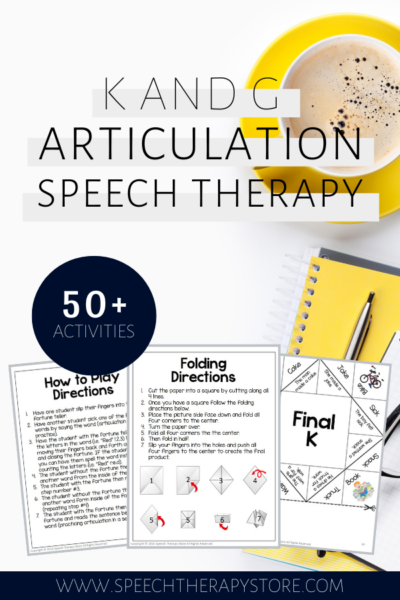
Seasonal Activities
- Free Thanksgiving Baking Articulation Activity (K & G Sounds) by Lil Mae’s Speech is a great set of boom cards with a Fall and Thanksgiving theme!
- Spring Freebie: Articulation /k/ and /g/ by Tale of Two Speechies is a bundle of Spring themed K and G articulation worksheets. This is highly rated!
- Initial /K and G/ Fall Leaves – Articulation Craft FREEBIE by Let’s Get Speechie
Books and Short Stories
- Goodnight Moon by Margaret Wise Brown is perfect for articulation therapy goals on your caseload. The repetitive text with the “g” sounds helps children with speech disorders to anticipate what might come next in the story.
- Articulation K and G: Pictured Silly Stories & Word Lists by Speech2u is a highly rated game that uses K and G silly words to make K and G short and silly sentences!
- G Sound Mini Articulation Activity Book Initial Medial Final Words and Phrases by Pep Talk is an engaging mini book to build with your students to practice the G sound.
For You! Grab our Articulation Reading Passages to practice your articulation goals with your students! This is a bundle of 266 reading passages with 6 stories per sound, and 20 articulation words per passage.
SEE ALSO: 279+ Free Speech Therapy Digital Materials
Reinforcement Games
- Free Sample! /k/ and /g/ Articulation Coloring pages by Easy Peasy Lemon Speechie is a great reinforcement game with high instances of hitting the target sound.
- K & G Articulation Dots FREEBIE! By Linden Speech is a great worksheet that is engaging and reinforcing for students practicing their K and G articulation.
- Hugs and Kisses: Articulation K and G by a Speechie World is a fun and silly game that students love to play! It has one game board and 2 mats.
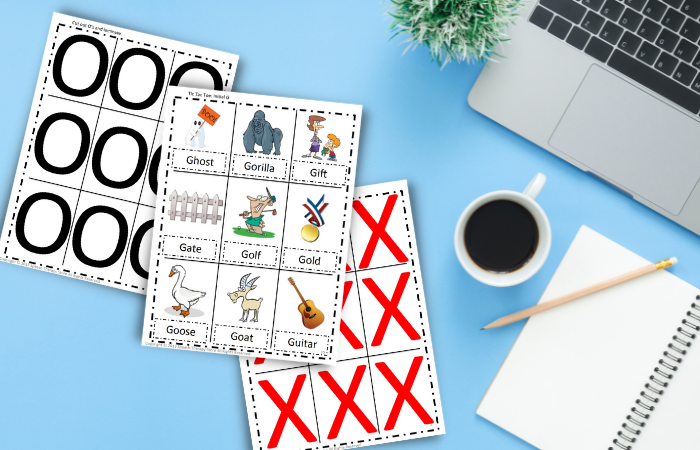
We hope this list of resources to use when practicing K and G articulation is inspirational and helpful for you! There are so many ways to teach K and G, and making the speech therapy session engaging and fun for our students is a high priority!
To help make your sessions fun, but also easy for you to plan, we compiled this bundle of a K and G preview of some of our most popular articulation games! Enter your info below to grab a preview of our Articulation Fortune Tellers and Articulation Tic Tac Toe for the K and G sounds. Find more of our Articulation Game Bundles on our Speech Therapy Store Shop!
<< FILL OUT THE FORM BELOW TO DOWNLOAD A MINI BUNDLE OF K & G ARTICULATION ACTIVITIES! >>
Grab your mini bundle of k and g articulation activities, frequently asked questions.
In addressing these frequently asked questions, we aim to provide specific, evidence-based answers that will be useful for speech therapists, parents, and educators involved in helping children practice and improve their articulation of K and G sounds.
What activities can help children practice K and G sounds in speech therapy?
We often use engaging activities like blowing bubbles to encourage the production of the /k/ sound, as it closely resembles the mouth shape required to say “k.” For the /g/ sound, we might incorporate games involving animals, like gorillas or geese, as they naturally elicit the /g/ sound in a fun context.
How does using minimal pairs in therapy assist with correcting K and G sound errors?
Using minimal pairs, such as “coat” and “goat,” assists in enhancing phonological awareness. We find that this contrastive approach helps children discern the difference between sounds, thereby improving their articulation accuracy for K and G.
What are some age-appropriate K and G speech activities for preschoolers?
We use play-based activities such as “kitchen” stations for the /k/ sound or “garden” themes for the /g/ sound. These relevant, enjoyable activities help preschoolers practice the sounds without the drills feeling like work.
How effective are loaded sentences in the remediation of K and G sounds?
Loaded sentences, which are packed with target sounds, have proven very effective in our work. This repetitive and contextual practice encourages the child to use K and G sounds in a sentence-level format, fostering generalization to natural speech.
What types of ‘Would You Rather’ questions could be used to reinforce K and G sounds in therapy sessions?
We may use questions such as “Would you rather have a pet kitten or a pet kangaroo?” to practice the /k/ sound. For the /g/ sound, we might ask, “Would you rather grow grapes or play a game?” These choices invoke more natural speech and frequently repeat the targeted sounds.
At what age should a child typically be able to pronounce K and G sounds correctly?
Children typically master the K and G sounds by the age of three to four years. However, we observe variations in development, and we emphasize the value of early intervention if a child is showing signs of difficulty with these sounds.

Want Even More K and G Speech Therapy Activities?
- Free SLP Planner [Updated Yearly]
- 917+ Best Free Boom Cards for Speech Therapy
- 31 Best Wordless Videos to Teach Problem Solving
- 133+ Categories List for Speech Therapy
- The Best Handout for Phonological Processing Disorder Therapy
Want the Best of the Bests?
Be sure to check out our most popular posts below!
- 21 Best Reinforcement Games for Speech Therapy / Teletherapy
- Best IEP Resources
- 71+ Free Social Problem-Solving Scenarios
- 430+ Free Multisyllabic Words List Activity Bundle
- 432+ Free Measurable IEP Goals and Objectives Bank
- 279+ Free Speech Therapy Digital Materials
- 179+ Free Speech Therapy Wh-Questions Printable
- Clipart Credits
- Privacy Policy

Fun G Words Speech Therapy Printable Game Free
Looking for a fun way to engage kids in speech therapy using games? This G Words Speech Therapy for initial sounds printable game with dot markers is perfect!
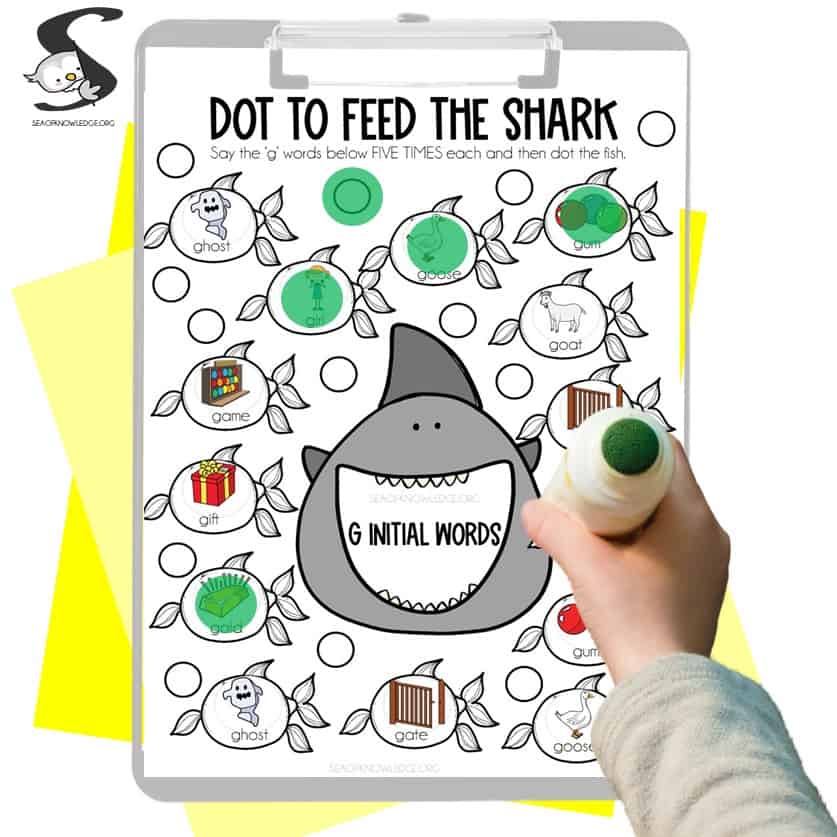
Looking for a great way to practice target words in g initial sounds?
Speech-language pathologists are always on the lookout for new and fun ways to help practice speech therapy in a fun way!
This printable game targets the g sound and encourages children to produce correct production of sounds.
G Sound Word Lists
The list used in this game are simple words that begin with the initial g sound. the sound is produced in the soft palate which sometimes is difficult for kids to learn.
Also, since it is produced at the back of the tongue, it can seem more difficult to master.
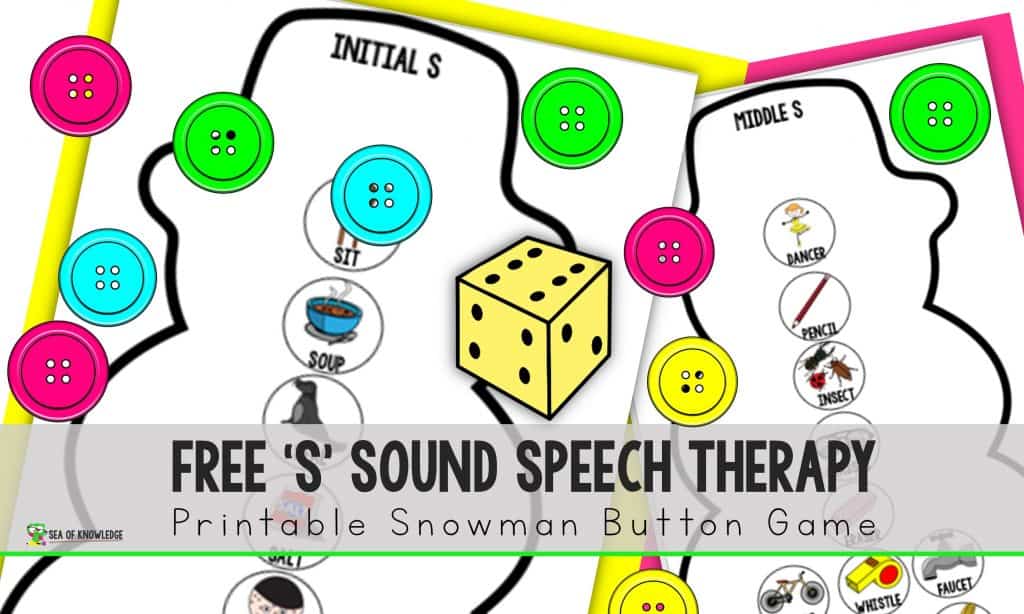
Snowman themed s sound speech therapy snowman game.
Speech sounds can be practiced using simple calling card, however using games like this one will make for a great way for young children to practice the initial position sound in any speech session.
G Sound in Speech Therapy
The “g” sound is a voiced velar fricative. Also, the “g” sound is made by first pressing the back of the tongue against the velum, or soft palate, and then moving it forward to touch the upper teeth.
A g sound can be used at the beginning of a word to represent an action that will happen in the future. For example, “I’m going to go get gas.”
Is Your Preschooler Drowning in Boredom? 🆘
50+ pages of ocean fun for preschoolers.
Struggling to keep your little one engaged and learning? Feeling lost at sea when it comes to finding creative activities? Our exclusive 50-page Ocean Preschool Workbook is your life raft!
I have not had more success in engaging them all summer long – but by using these activities.

Packed with vibrant illustrations, fun-filled exercises, and captivating ocean themes, this workbook will transform playtime into an educational adventure.
Don’t let your child get shipwrecked by boredom – click here to grab your copy today and unlock a world of ocean learning! Limited time offer only through this post.
How to practice letter sounds in speech therapy
Practicing letter sounds is an important part of speech therapy. Children who are learning to read should be able to recognize the different sounds that letters make.
This article will show you how to practice letter sounds in speech therapy, and what you should do if your child is struggling with a certain letter sound.
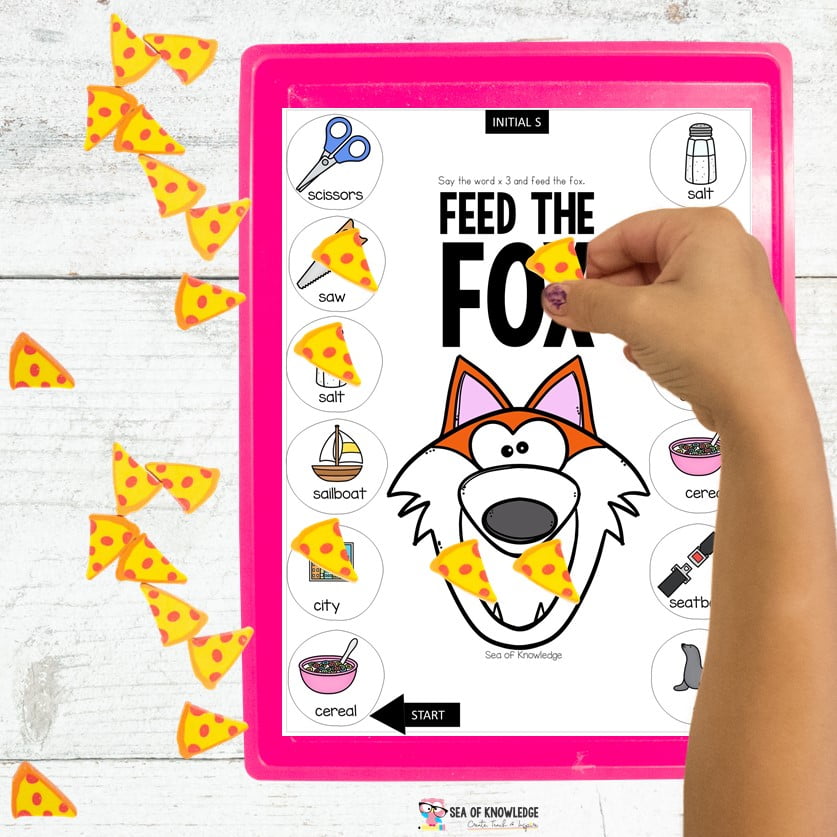
Don’t forget to get these free printable fox themed games for ‘s’ sounds in all positions!
For each sound, there are three activities that can be done:
-Pretend that you’re a cat and say the sound as meow.
-Say the sound while pretending to brush your teeth or eat breakfast.
-Say the sound while pretending to count from 1 to 10.
Children can use the back of their tongue to practice pronouncing the g sound initial words.
Sometimes, kids just need a little more practice and doesn’t always mean that they have an articulation disorder. Sometimes, practising sound sin front of a mirror helps!
Picture Cards for Child’s Speech
I always try to use picture cards for speech articulation, but games work just as well if not better.
Video game or games like Boom Cards would also work perfectly to help kids master correct position of sounds in words; and help practice proper vocal cords.
This game would do a great job at working on g words speech therapy. If you’re looking for more games like this, be sure to sign up to see medial and final g sounds released soon on this blog.
If you’re a speech therapist who is constantly looking for new and fun ways to practice a single sound at word or sentence level with your learners or patients, you’ve come to the right place!
G Words Speech Therapy PDF Game
Download your FREE set below. Please note however that:
- This is for personal and personal classroom use (to share this resource, please direct others to this post to grab their own free copy)
- This may NOT be sold, hosted, reproduced, or stored on any other site (including blog, Facebook, Dropbox, etc.)
- All materials provided are copyright protected. Please see Terms of Use .
- Graphics Purchased and used with permission
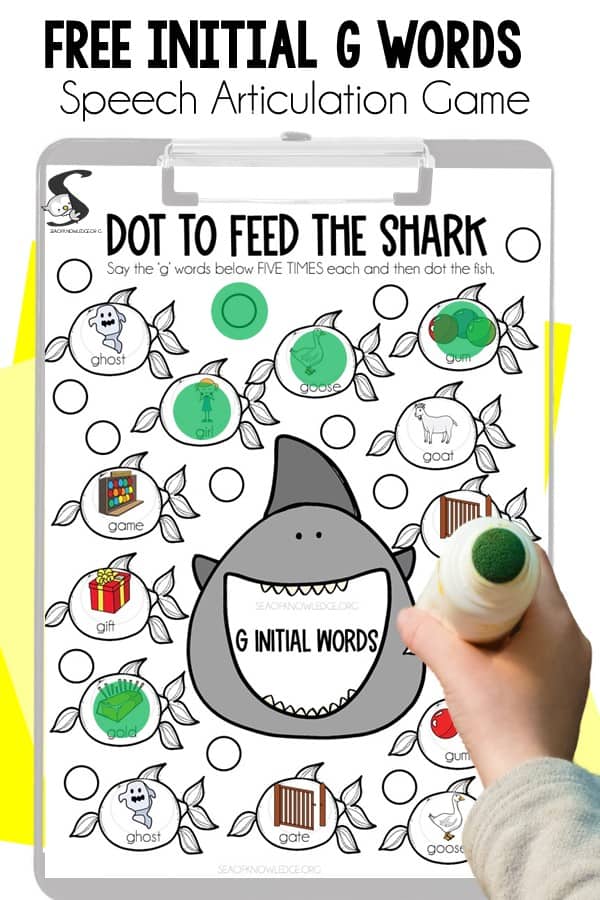
G Words Speech Therapy Shark Game
Input your email to get a direct link to this printable pack!
You may also like

50 Behavior IEP Goals (Plus a Free Template List)

10 Hands-on Camping Speech Therapy Activities for...
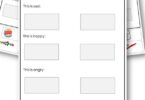
10+ Free Life Skills Worksheets – Printable...
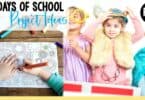
Ideas for the 100th Day of School [100 days of school...
Leave a comment x.
This site uses Akismet to reduce spam. Learn how your comment data is processed .

IMAGES
VIDEO
COMMENTS
245+ G Words, Phrases, Sentences, and Reading Passages. As promised here are the words for your unlimited use. If you know others who can use our lists ..... please share this page using our site share buttons. We also offer a free 5 part video series on Teaching the G sound. Explore Our Goal Reaching, Client Centered Products
G Word Lists and Activity Ideas for Speech Therapy. A Speech Therapist shares tips on how to teach the G sound. Learn about voice and voiceless pairs. Includes initial G word list, medial G word list, and final G word lists. Activity ideas and speech therapy resource suggestions for the G sound. Gam
G Words Speech Therapy. For your unlimited use, I've gone ahead and gathered over 600 g words to work on your student's or child's speech. Word Level: G Words Speech Therapy. One way to practice is to have your child or student practice their target sound at the word level. Below is a list of initial g words, medial g words, and final g ...
gecko girl gas goat gorilla gate golf game ghost good gum go guitar goal get glue /g/ gar initial words bage gooey
The following word lists contain words with the initial g sound, medial g sound, and final g sound. These articulation word lists allow the SLP to easily work on a target sound in speech therapy. Quickly pull these word lists up during your speech therapy session and pair them with the game or activity of your choice. These lists are helpful ...
Free SLP articulation word lists, flashcards with pictures, downloadable PDFs and more! Materials target the G sound in the initial, medial, and final positions! Whether you are looking for printable, no-prep, or virtual materials, FreeSLP offers free G sound activities for students of every level!
If your child is having trouble saying the sound G, my G Word List can help! If you are a speech therapist and you need some G speech therapy materials, you have come to the right place! Below you will find lots of free materials! First, there is a FREE worksheet (for non-members) and link (for members) to access new articulation materials. ...
How to Teach G Sound: Articulation Activities, and Word Lists for Effective Speech Therapy. The "g" sound is a voiced velar plosive, which means that it is produced by briefly stopping the airflow from the lungs using the back of the tongue (velar) and then releasing it in a sudden burst (plosive). The vocal cords vibrate during the ...
One of the critical sounds in speech therapy is the G sound. G words can be found in various positions within words: initial, medial, and final. Each position may require slightly different strategies in speech therapy. To address an articulation disorder, speech-language pathologists often use a variety of activities and tools, such as audio ...
initial g words. /g/ initial words Created by Heather Gehringer, M.S. CCC-SLP in Boardmaker©2010 www.heatherspeechtherapy.com. garbage goldfish garage. Title. Microsoft Word - initial g words.doc. Author.
Practice saying the "g" sound around the house in conversation, read books together and emphasize that sound (both the soft and hard sounds). Soon enough, your child will be "giddy" that he can make the perfect sound of "g". Pronunciation & Lisps Speech Therapy Techniques. Your child should be correctly pronouncing the sound of ...
Free initial G sound words for Speech Therapy printable flashcards featuring words with the "G" sound can be a useful tool for improving pronunciation and vocabulary. Some of the flashcards included in this worksheets are:- game, goose, garden, glass, guitar, glass, ghost, girl, gum, gift, grape, grass, goat and garlic. ...
Here are a couple of initial G words lists, 40 free PDF flashcards, and some example sentences that can be used for pronunciation exercises. These resources can be used for articulation lessons with ESL learners and speech therapy for any speakers who have issues making the /g/ sound.
Free Worksheets. I created these free speech and language worksheets so you can easily download and print them out to use as part of your speech therapy program. Just scroll down the page to view the worksheets by topic. You will find free speech therapy worksheets for articulation, vocabulary , grammar, holiday articulation and language games ...
The /g/ sound is a voiced sound and the /k/ sound is unvoiced. That means that your vocal cords are vibrating as air is passed through the mouth to make the /g/ sound. Position the back of your tongue at the near the back of the roof of your mouth, on what is called the soft palate. When you allow voiced air to come through, it is stopped by ...
Word lists make it SO much easier for you when having students practice targeted sounds and are great for auditory bombardment. With this file, you'll have 200 words that include /g/ at your fingertips! Included are: Initial /g/ (1 syllable) - 50 words. Initial /g/ (2+ syllables) - 50 words. Medial /g/ - 50 words.
Gabby is a girl who likes to go, go, go. Gabby goes to the grocery store. to get green grapes. /g/ initial story. Gabby goes to the pet store to. to get a green gecko. Gabby goes home. to get some rest.
Correct Position for K and G. Both k and g sounds are velars and stops. These velar consonants are both considered to be a "back sound"- or speech sounds made "in the back of the mouth". The correct tongue placement for both k and g involves the back of the tongue lifting to make contact with the soft palate.
final g words. Final /g/ words Created by Heather Gehringer, M.S.CCC-SLP in Boardmaker©2011 www.heatherspeechtherapy.com. tag dog hot dog bag plug bug rag jug hug mug rug flag price tag wag pig jog big frog. Title. Microsoft Word - final g words.doc. Author. hgehringer.
-g- final words Author: hhanks Created Date: 7/9/2010 2:53:46 PM ...
K & G Initial Sounds. Initial g and k words speech "fishing" homework freebie by Saidi Marshal is a set of homework sheets with 12 words per page. This is a fun way to practice K and G at the word level! FREE Initial K & G Articulation Sound-Loaded Sentences Worksheet by the Speech Spot Creations is a speech therapy worksheet that has target words that start with K and G. Start practicing ...
1. Now that the child can hear the difference between the two sounds (g and Zd) on their own, try the same with words. See 'Picture Set 2' for pictures of words that start with the target sound g and the produced sound d. 2. Cut the pictures out and mix them up. 3. Place two boxes on the table. Using the two sound cue pictures from
G Sound in Speech Therapy. The "g" sound is a voiced velar fricative. Also, the "g" sound is made by first pressing the back of the tongue against the velum, or soft palate, and then moving it forward to touch the upper teeth. A g sound can be used at the beginning of a word to represent an action that will happen in the future.